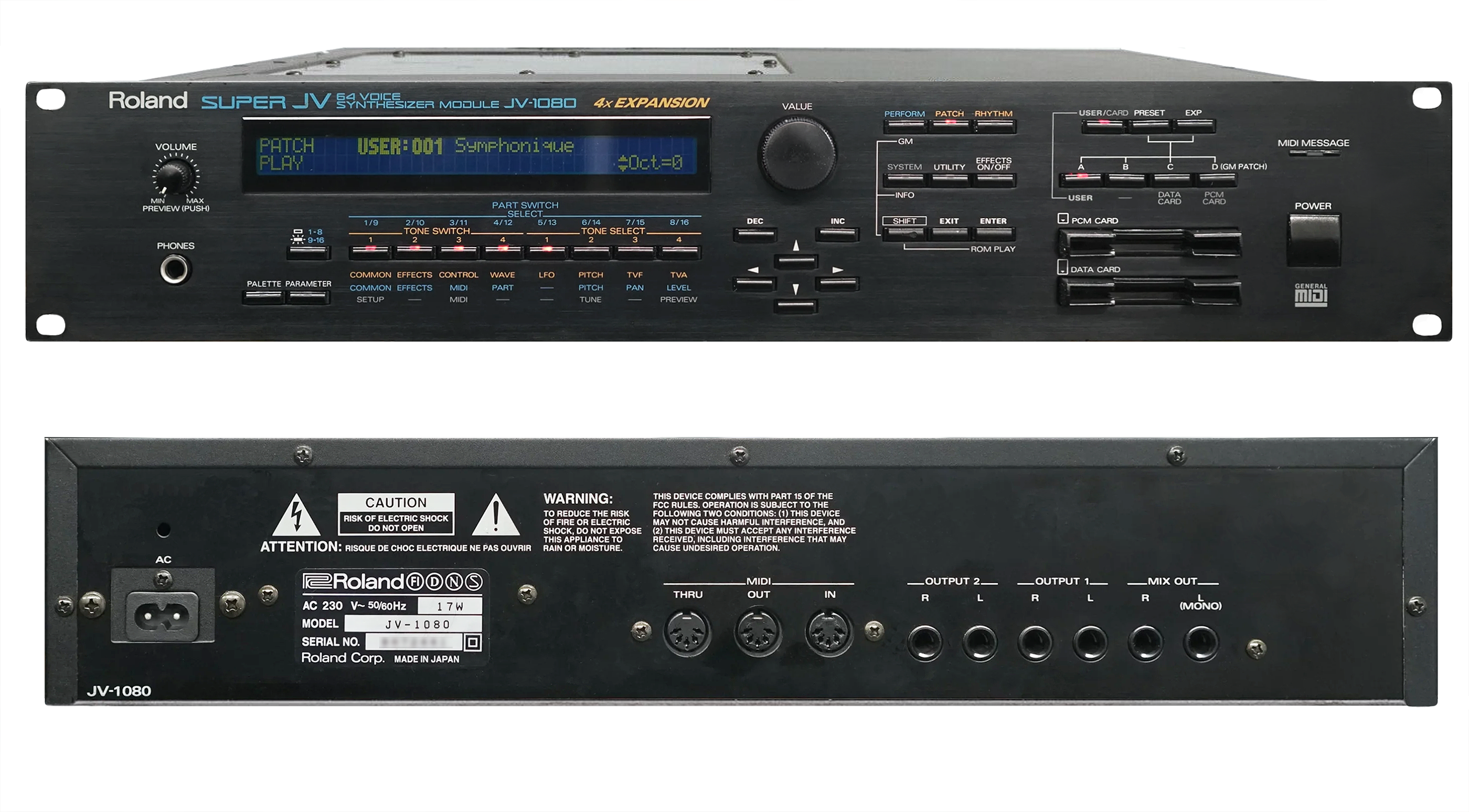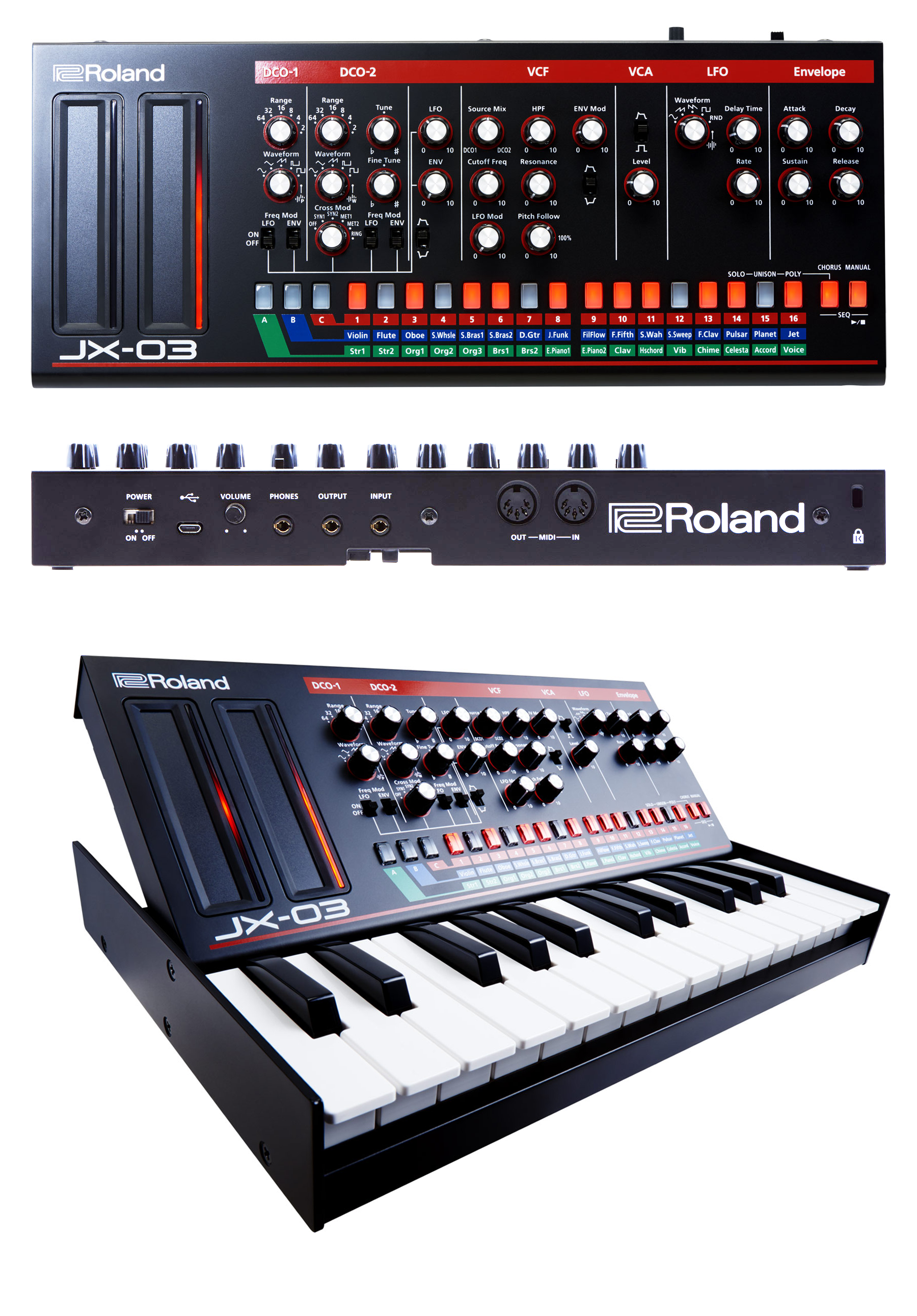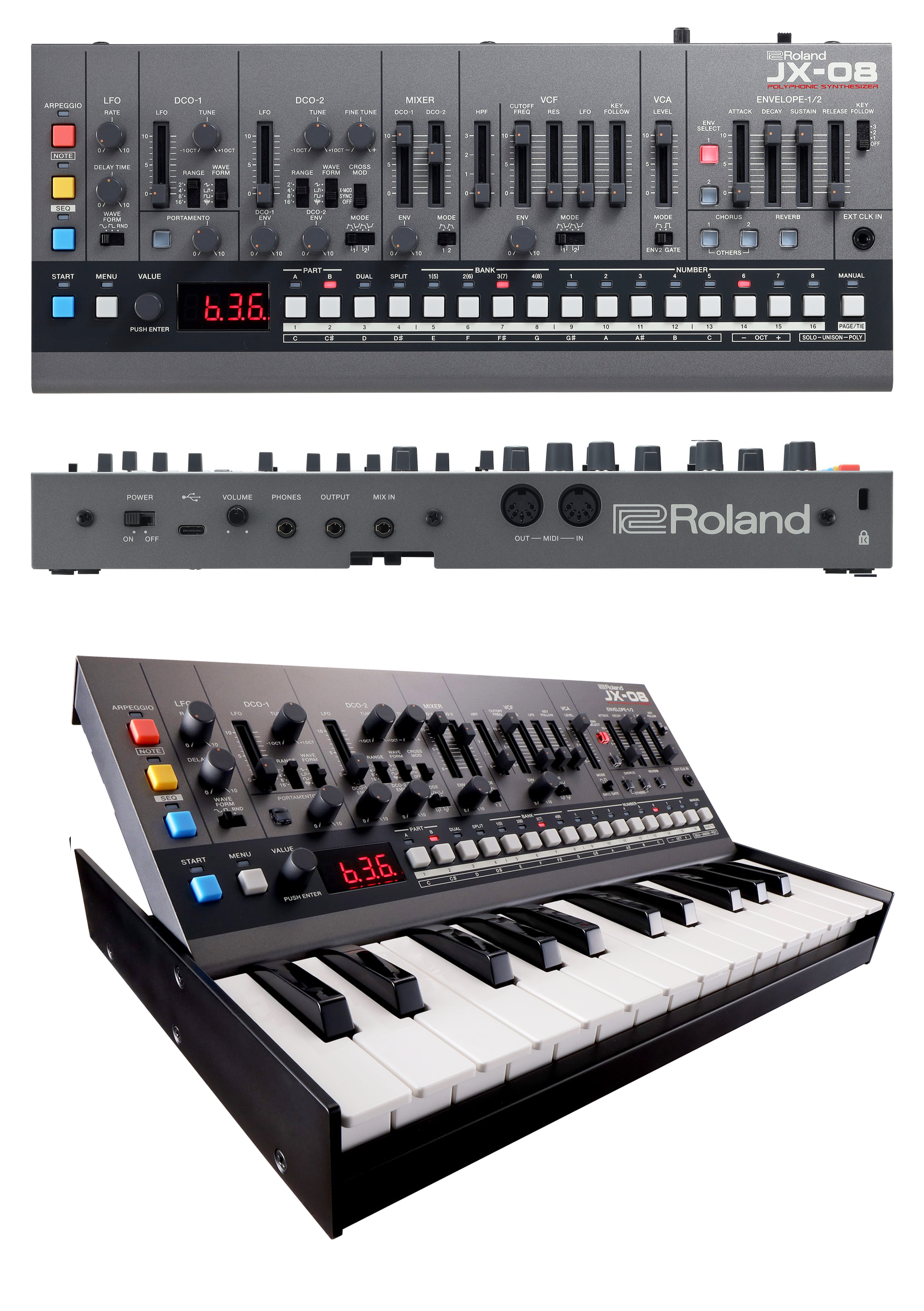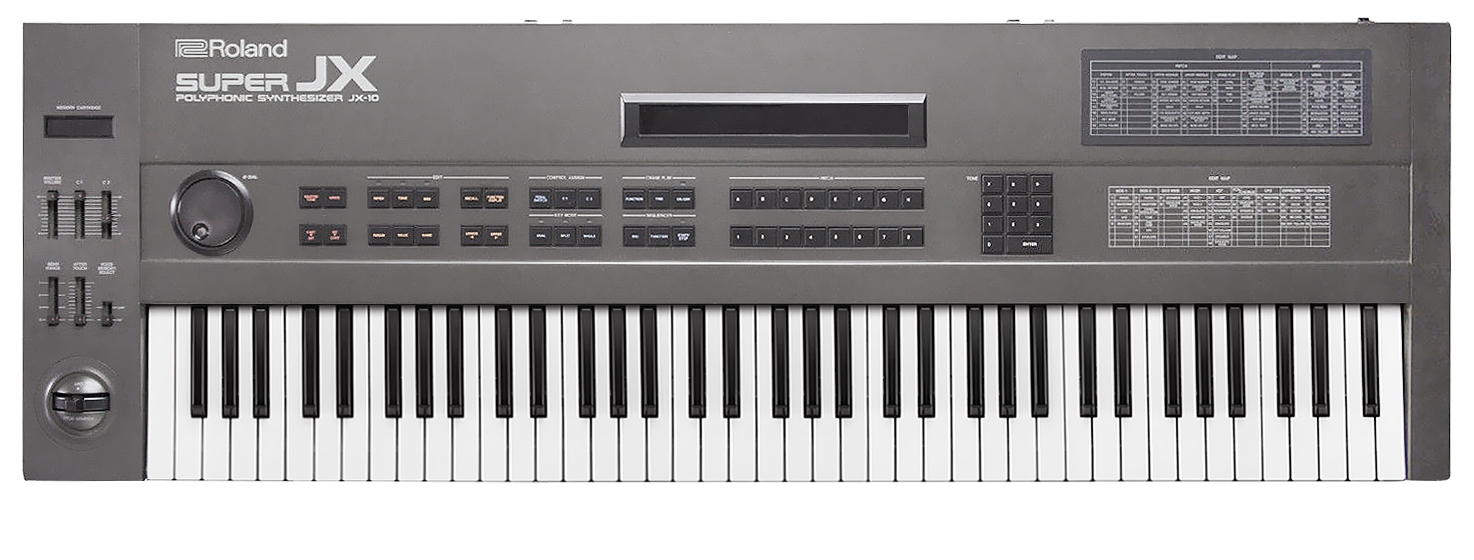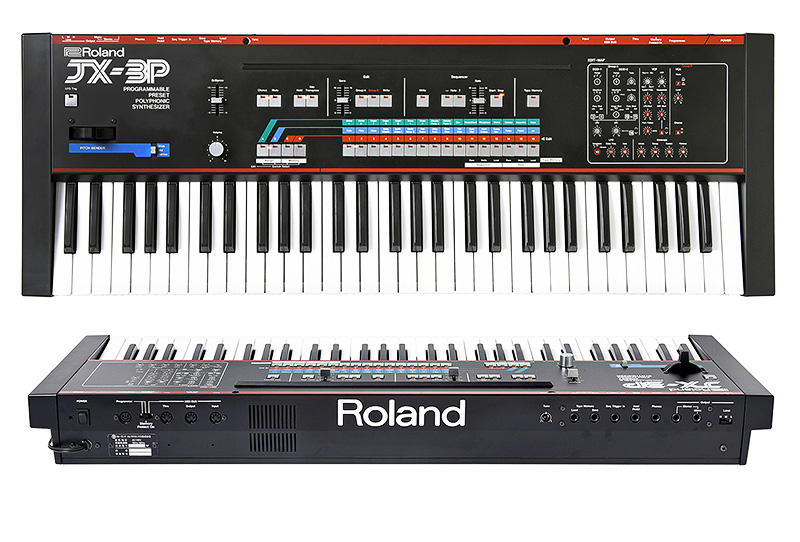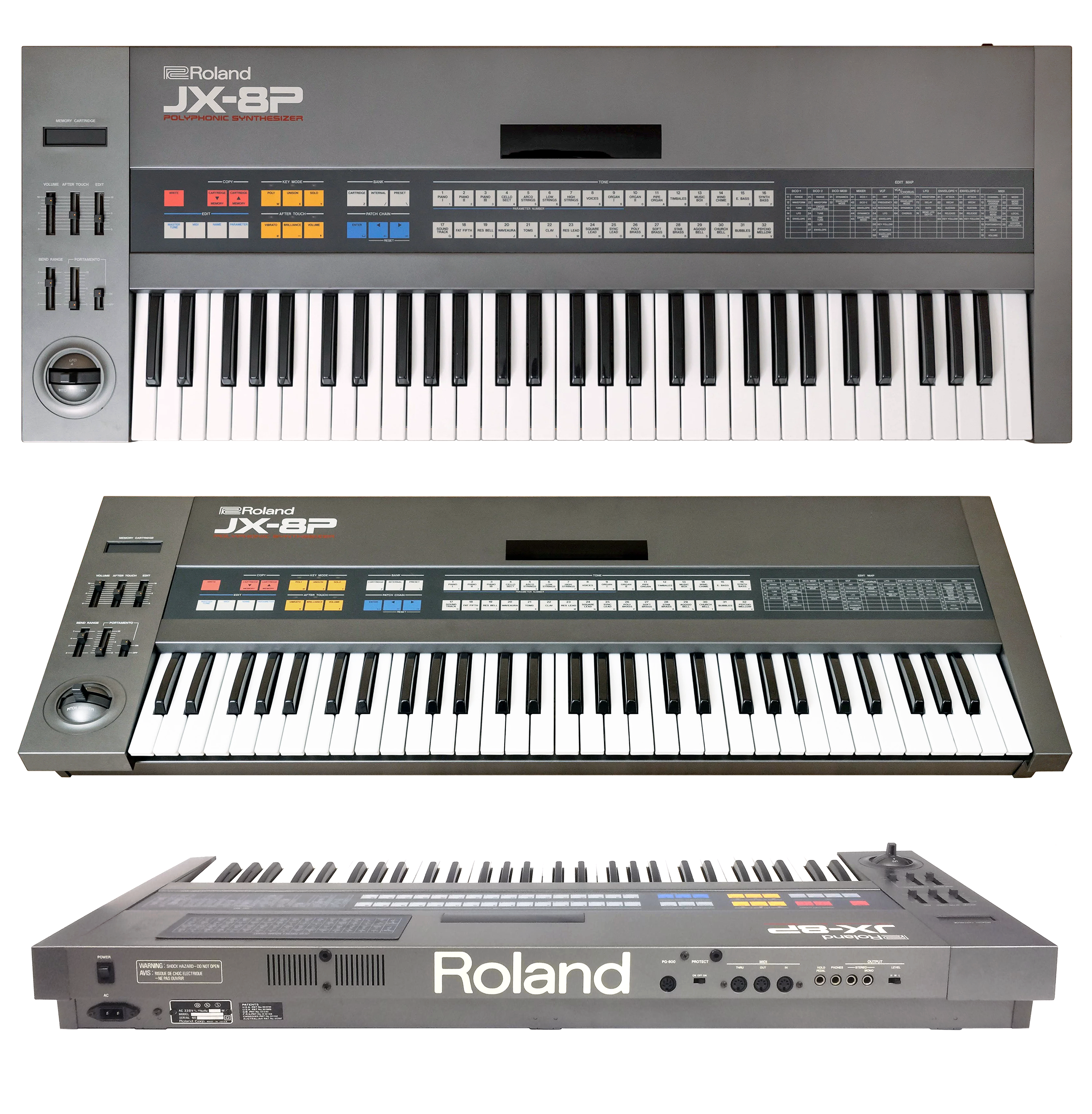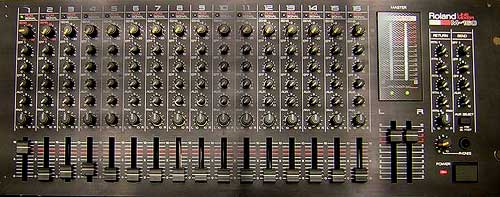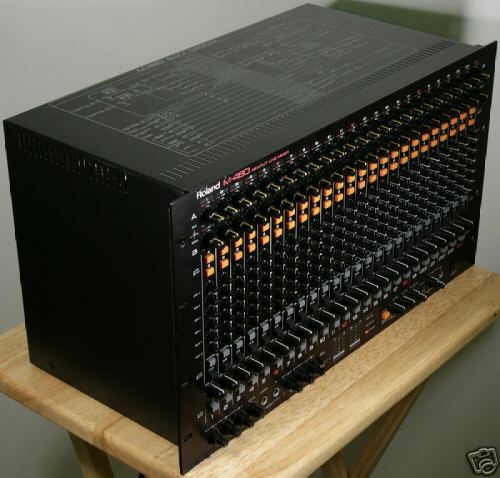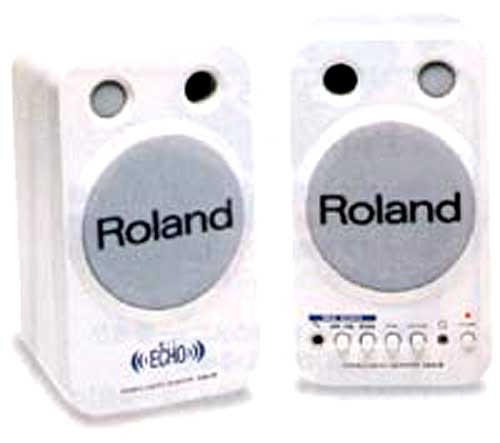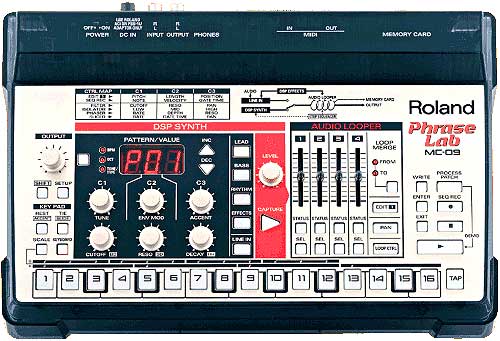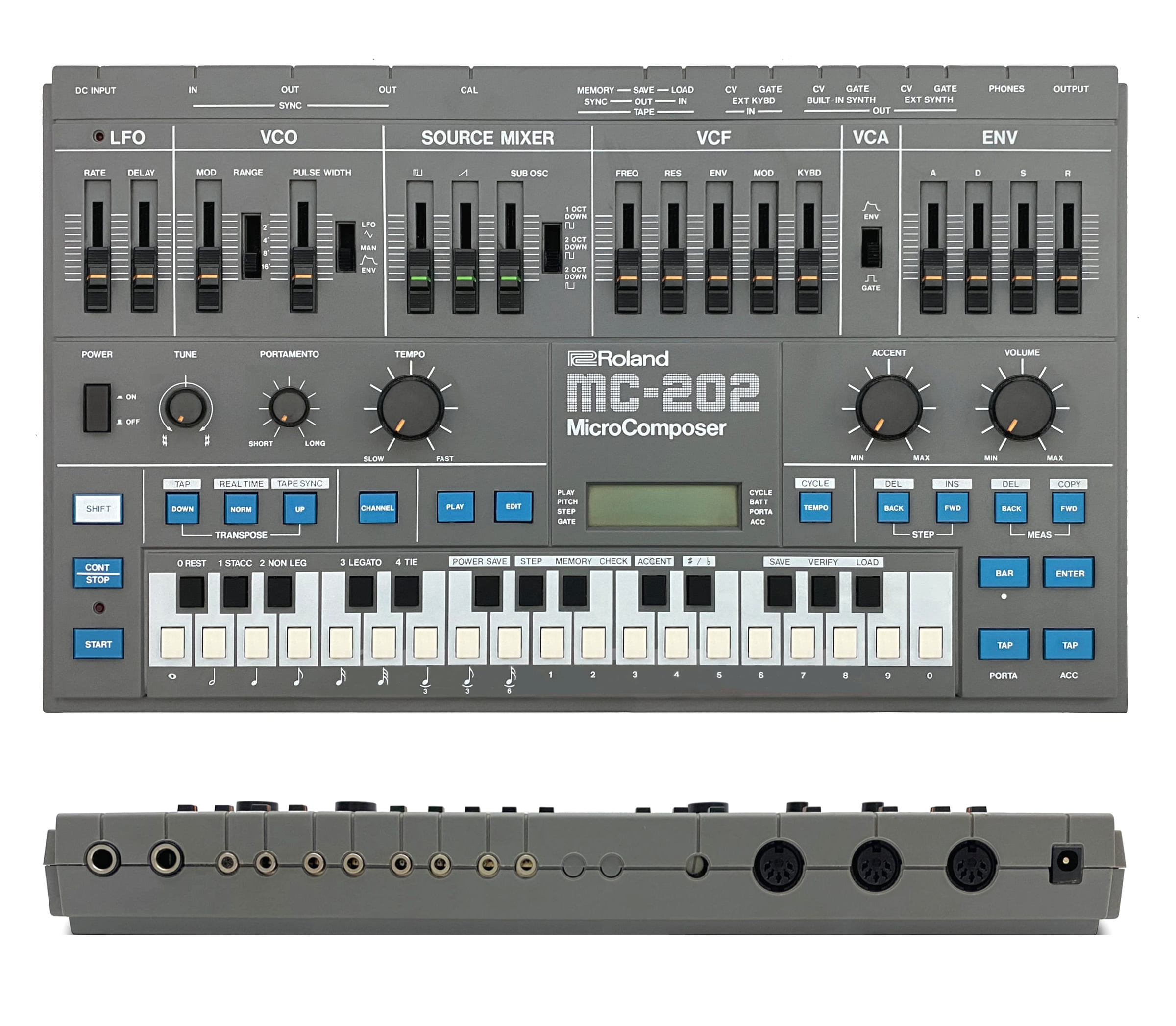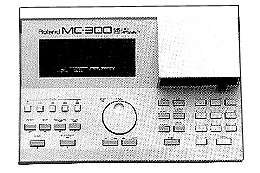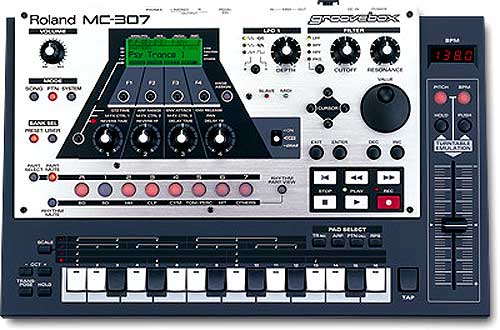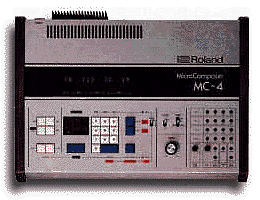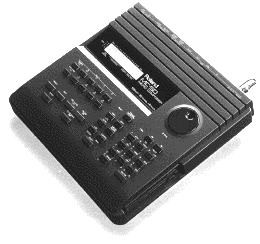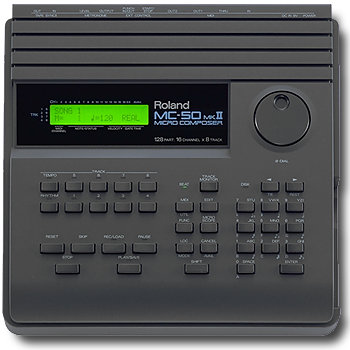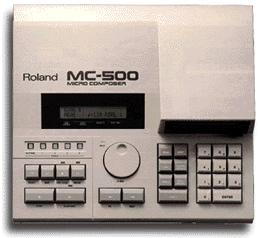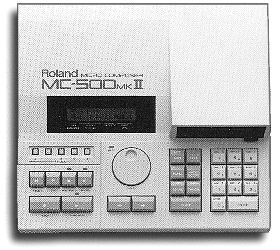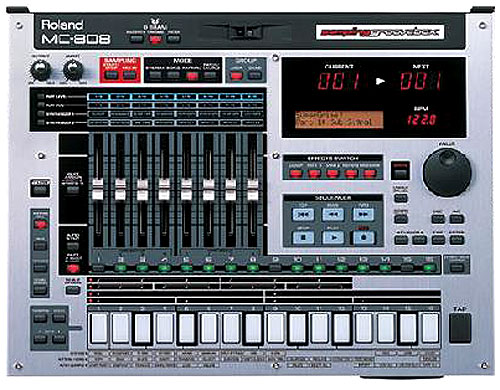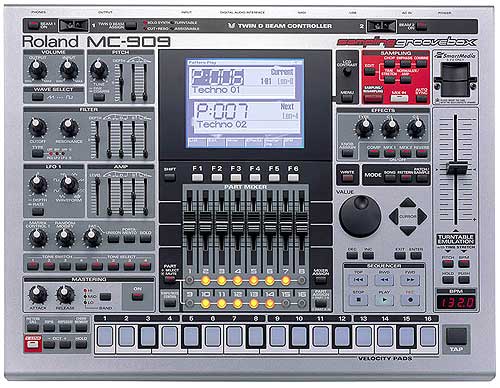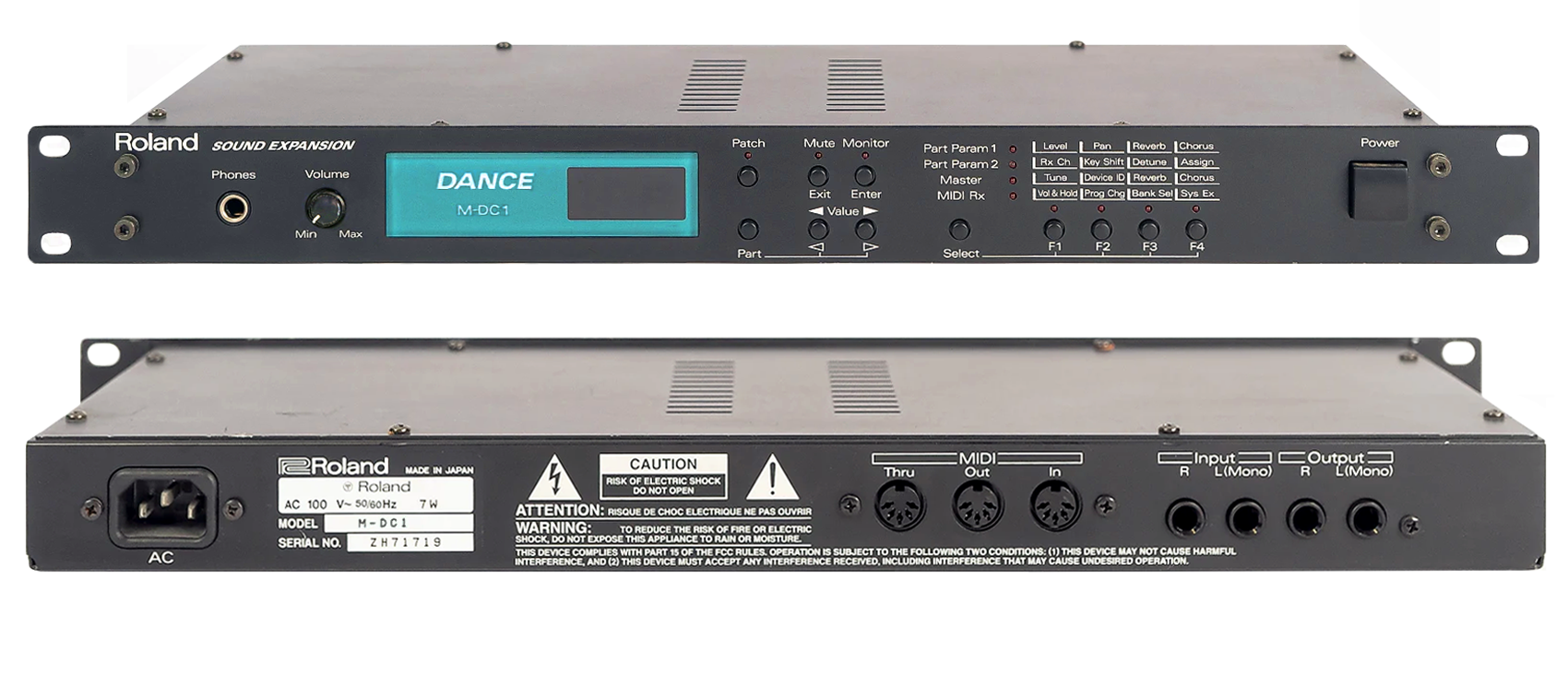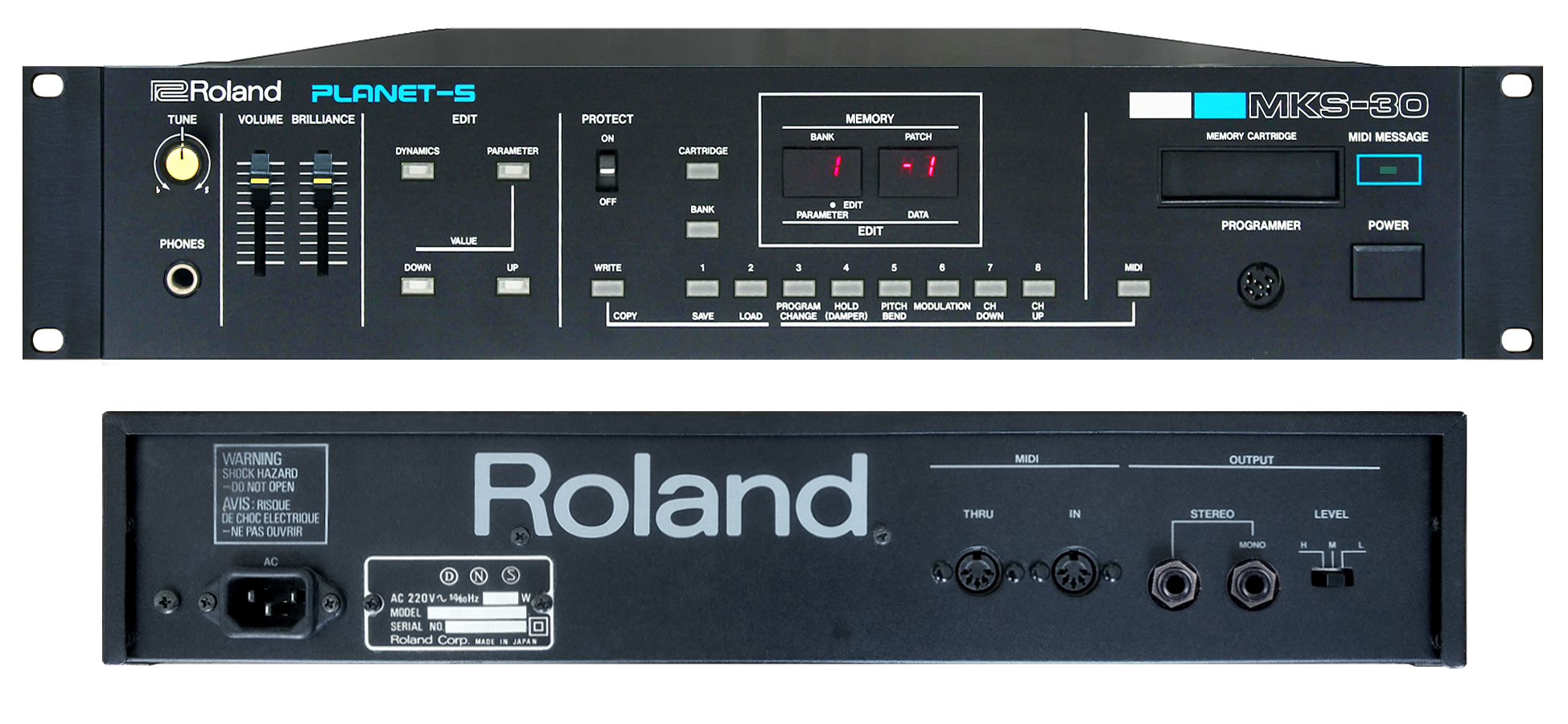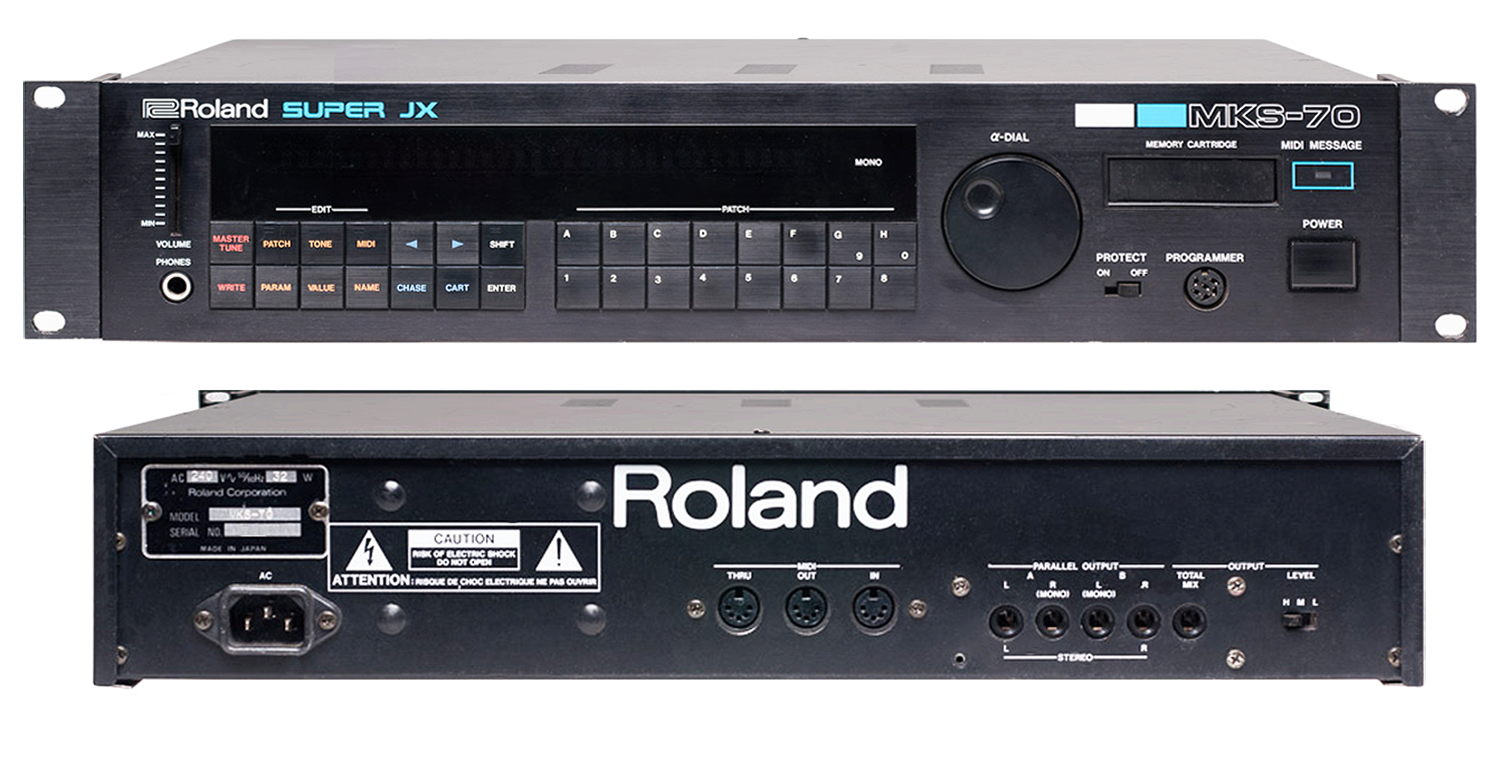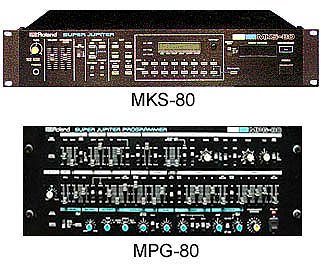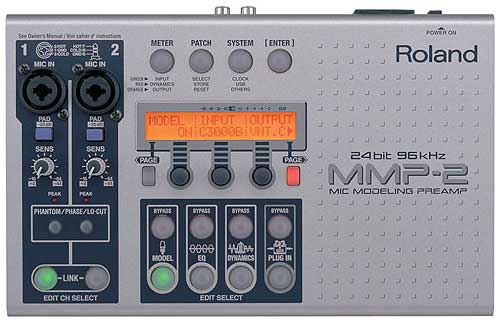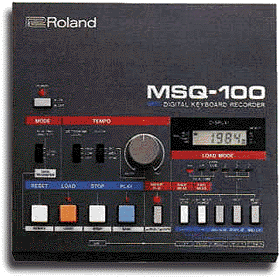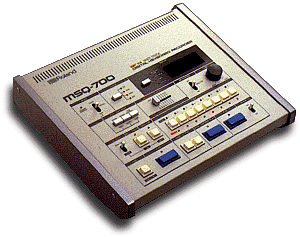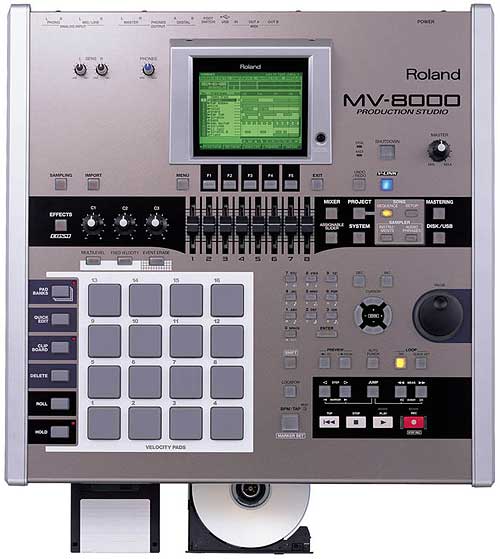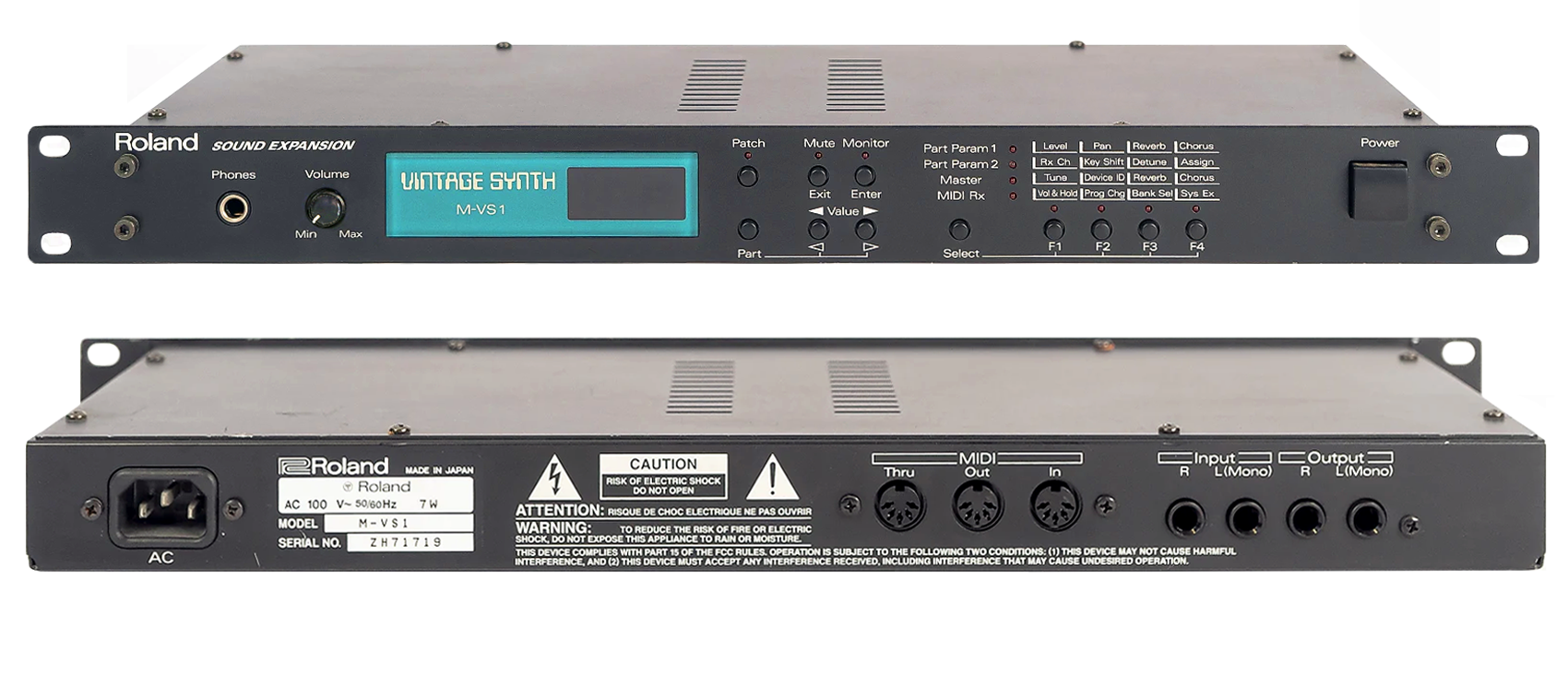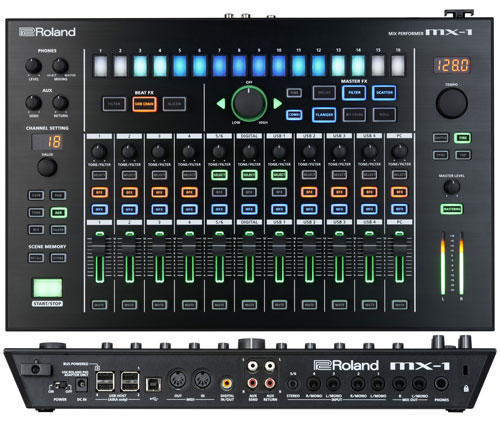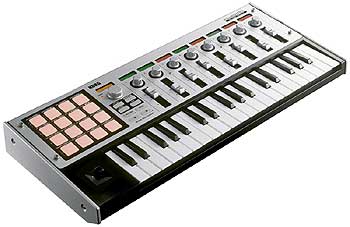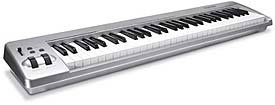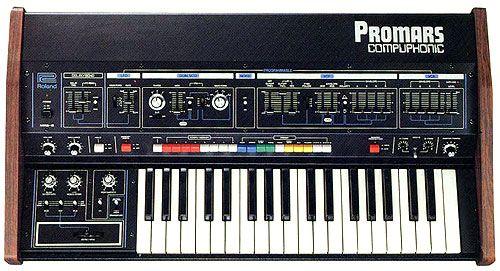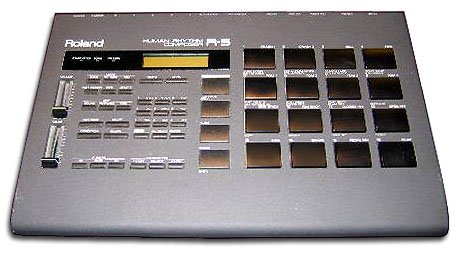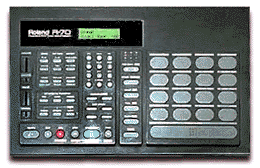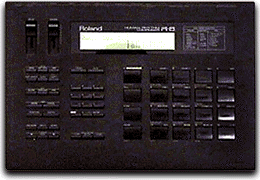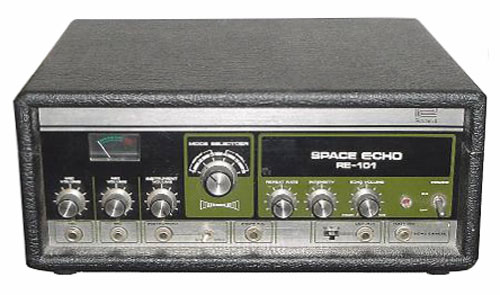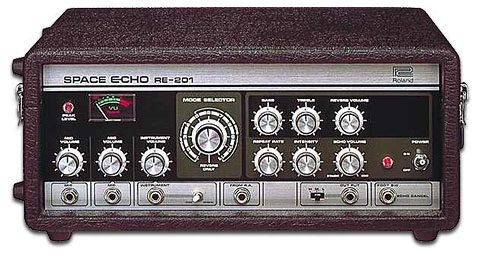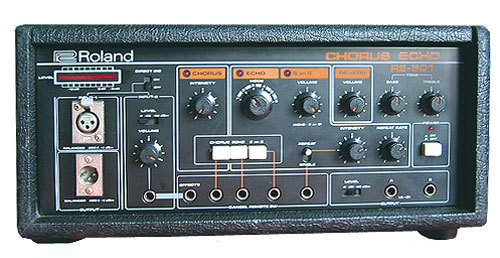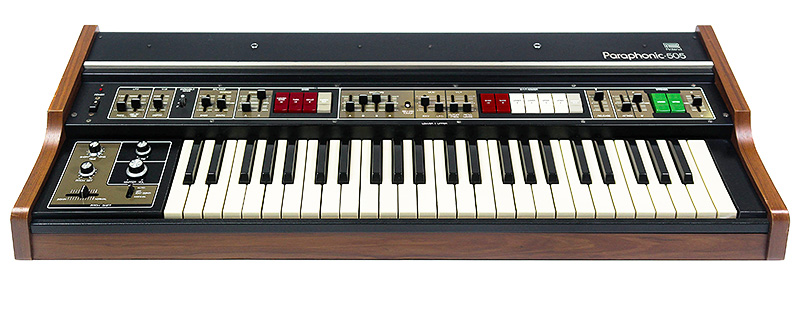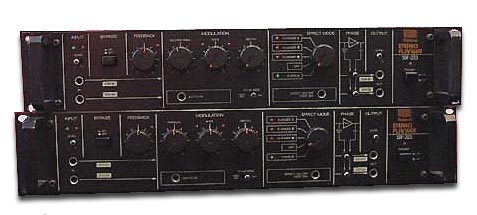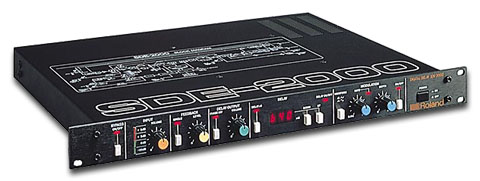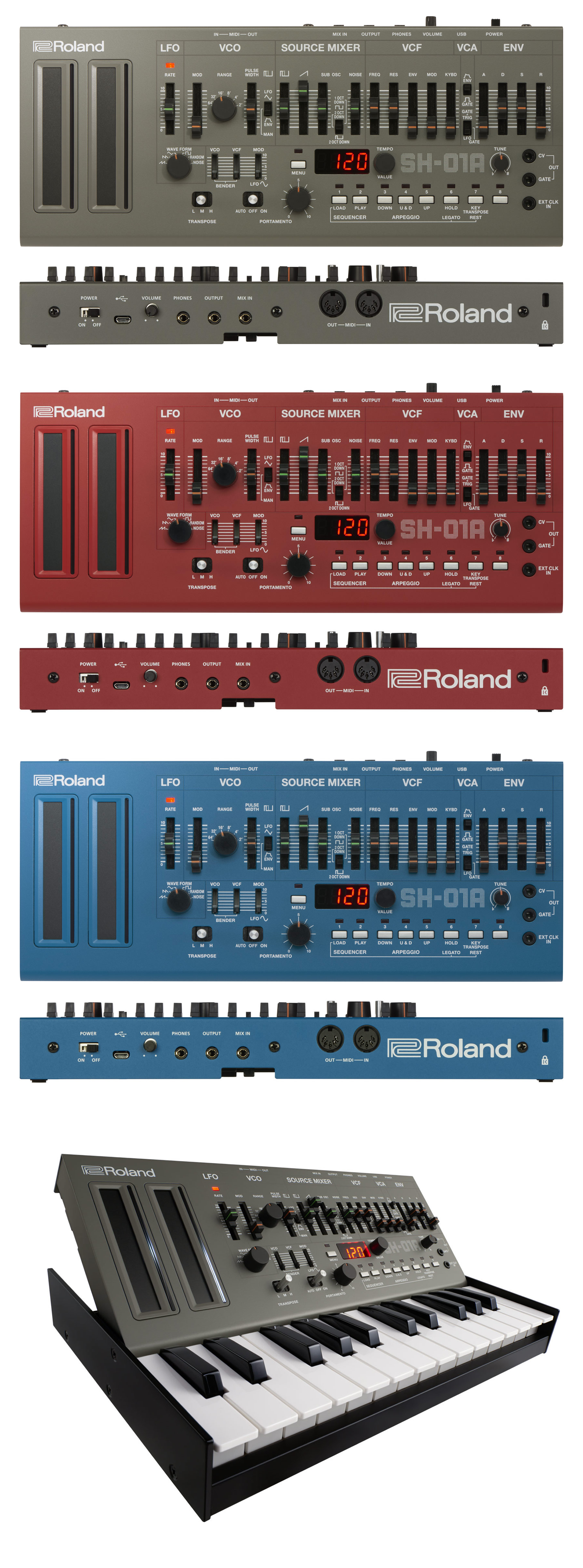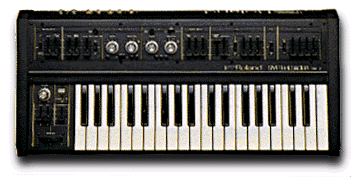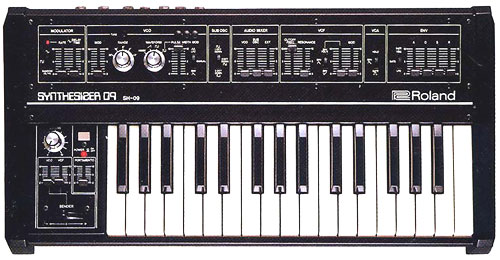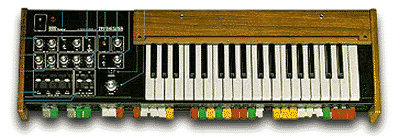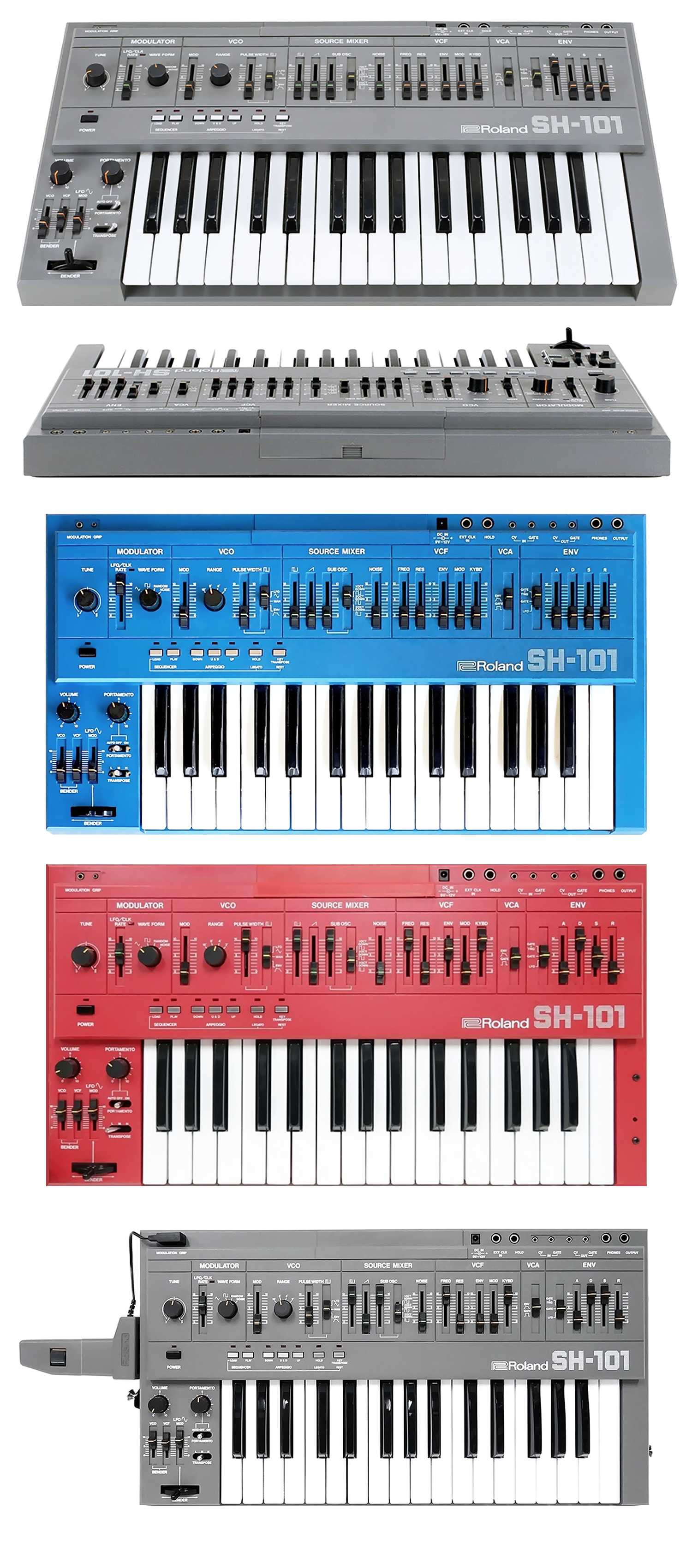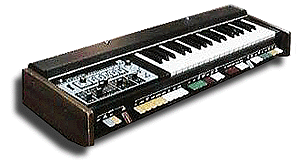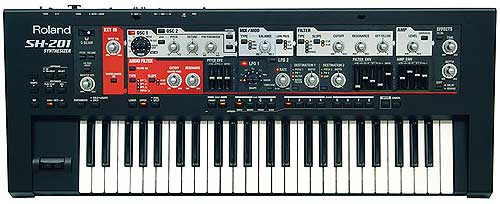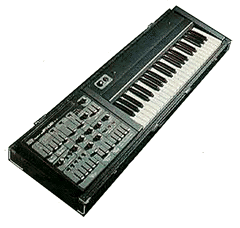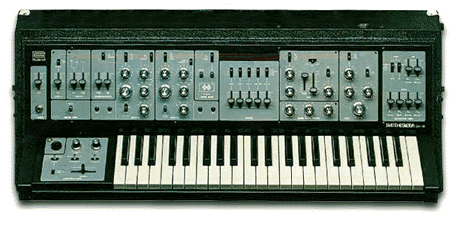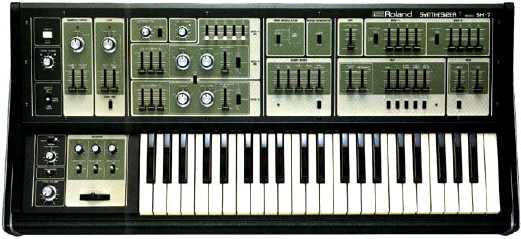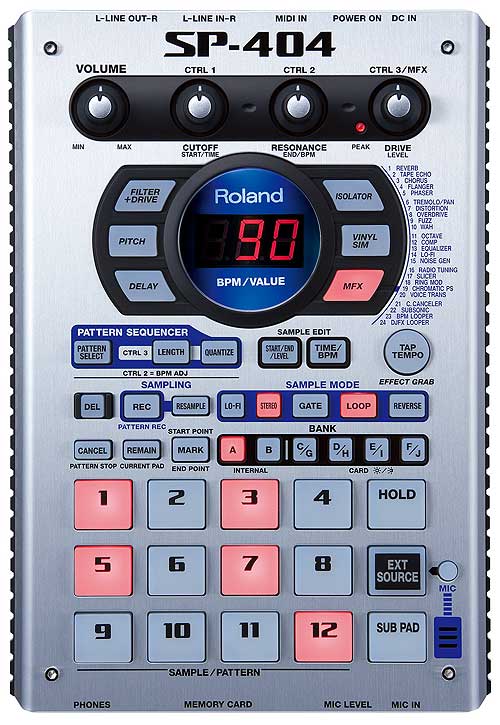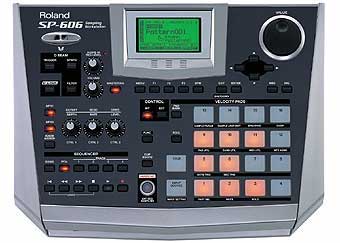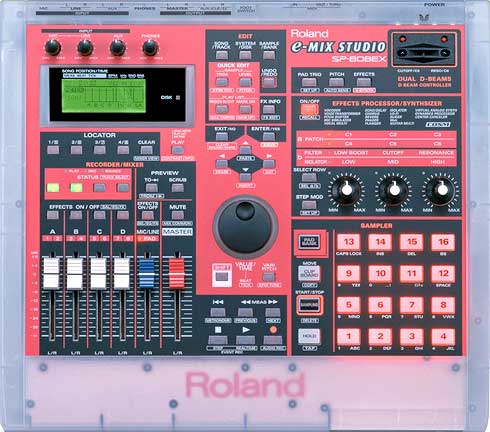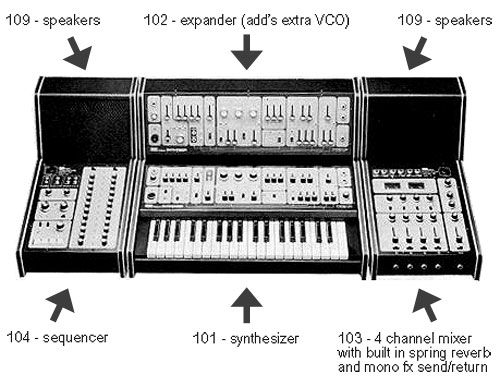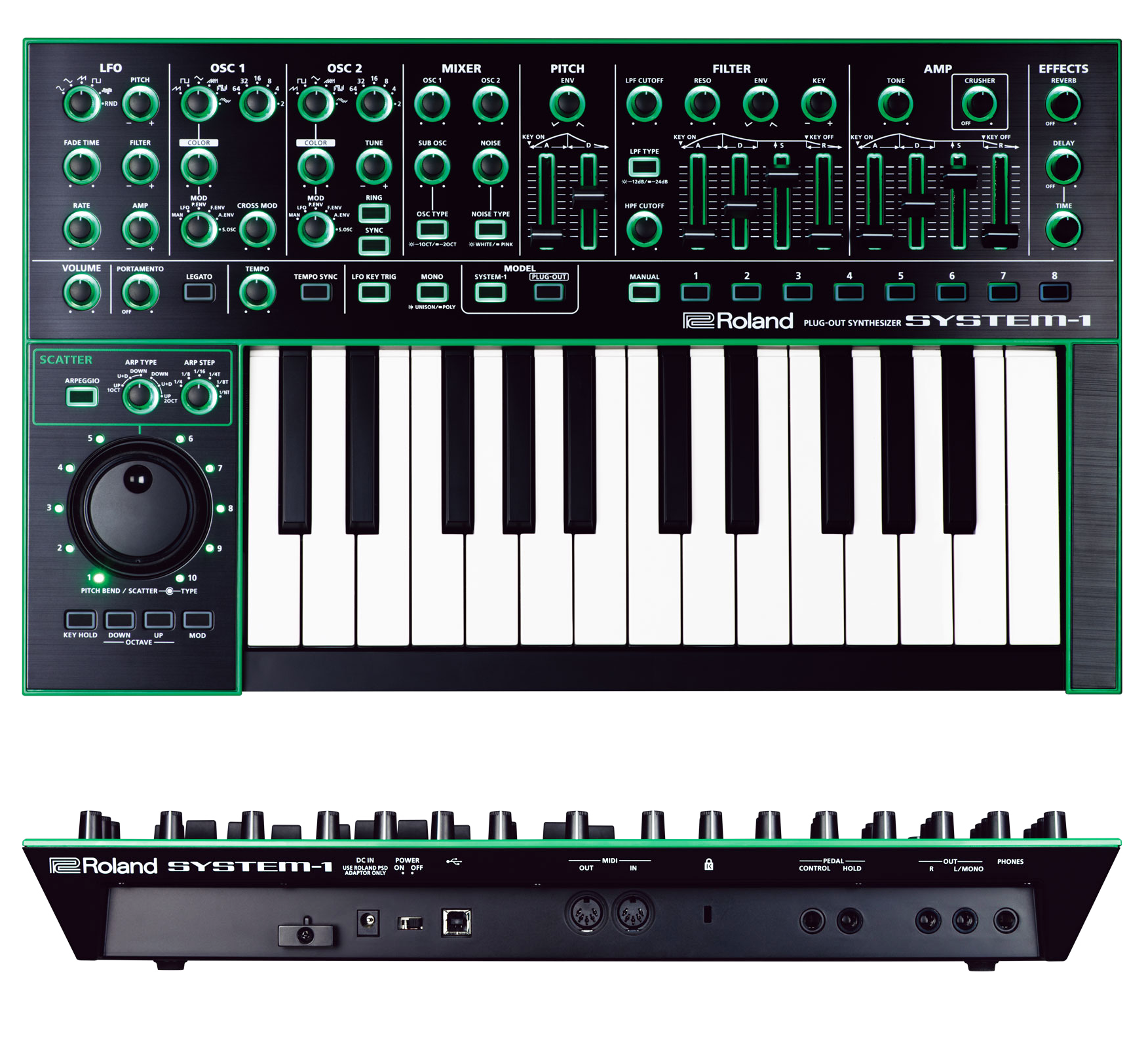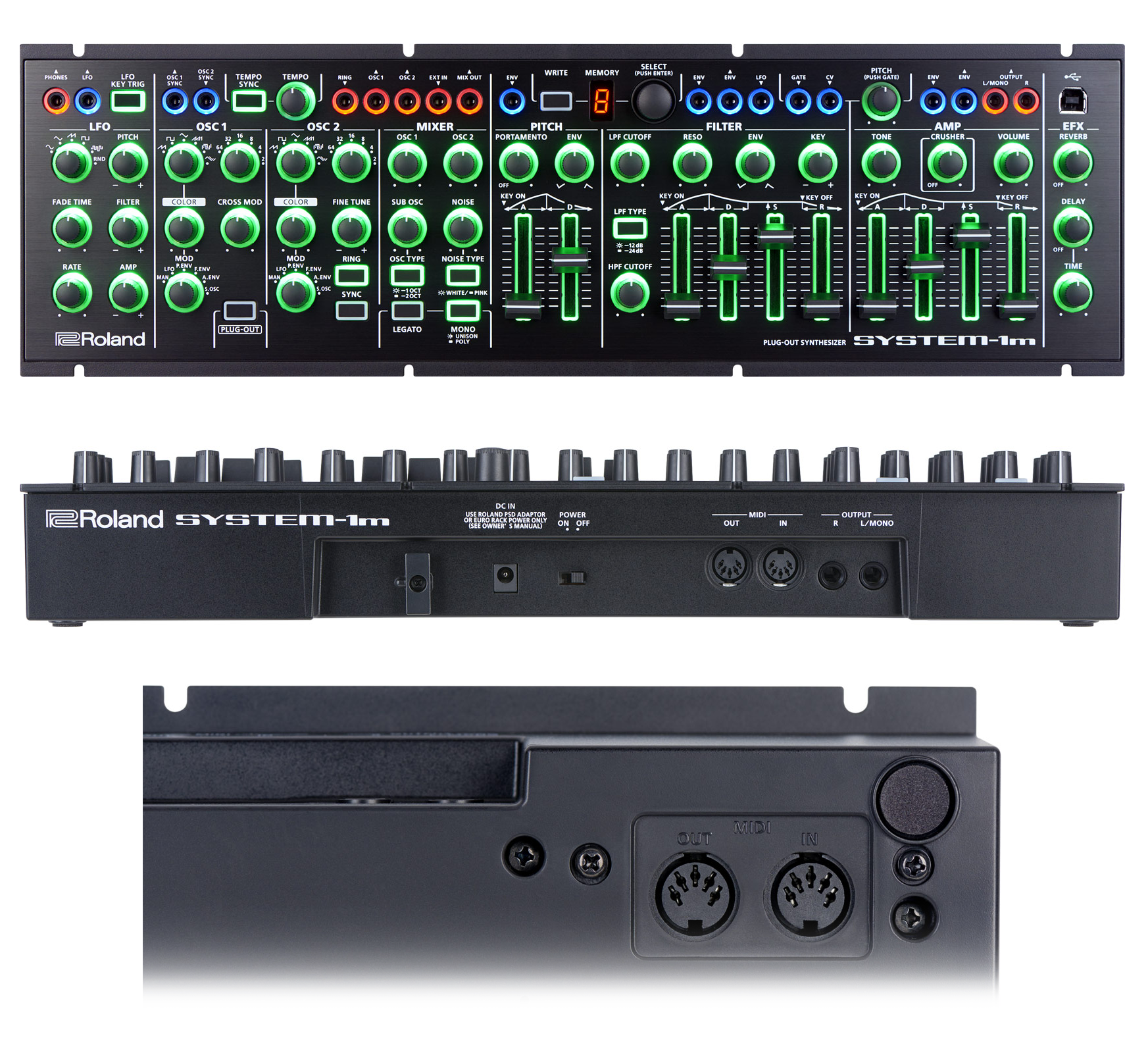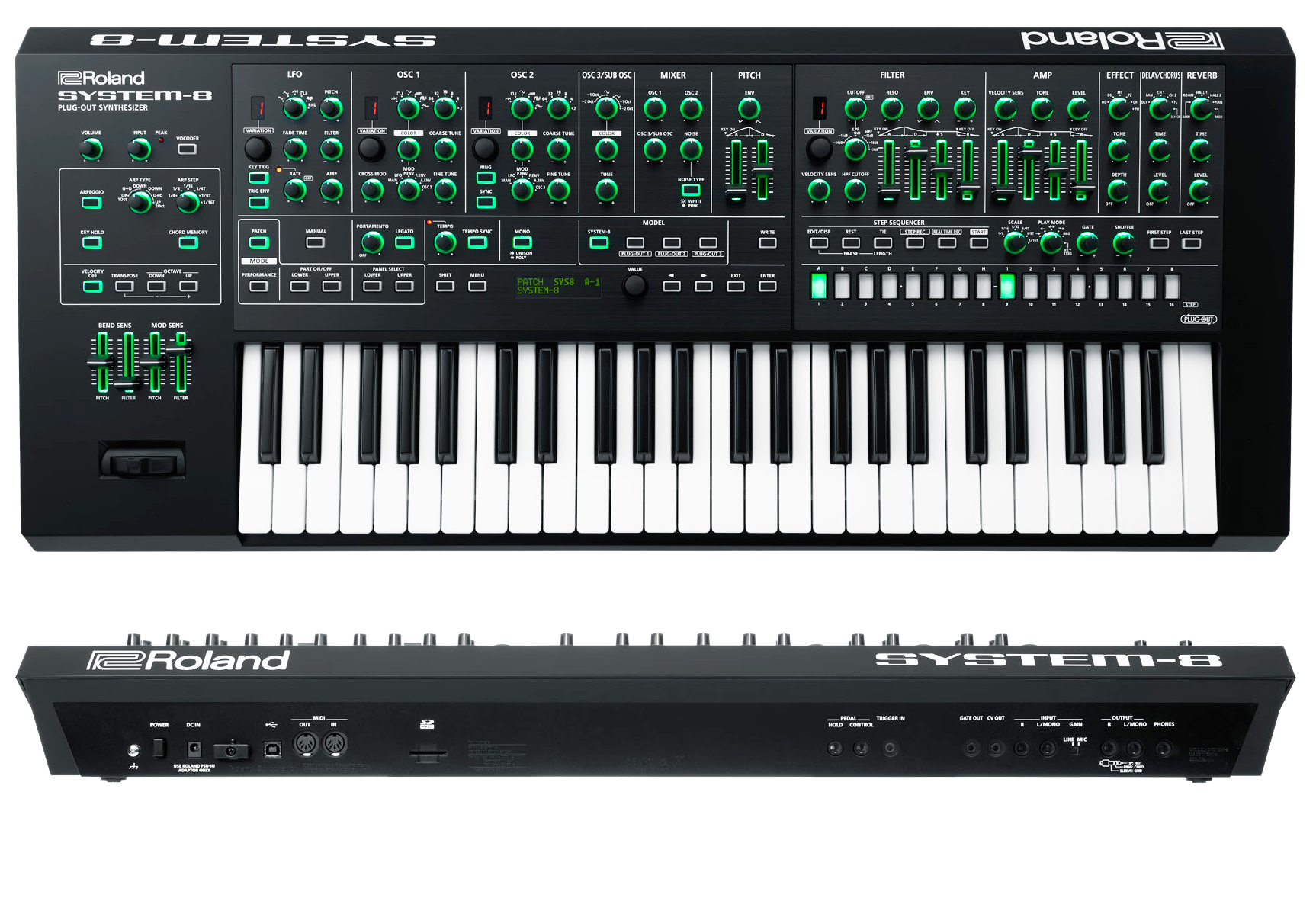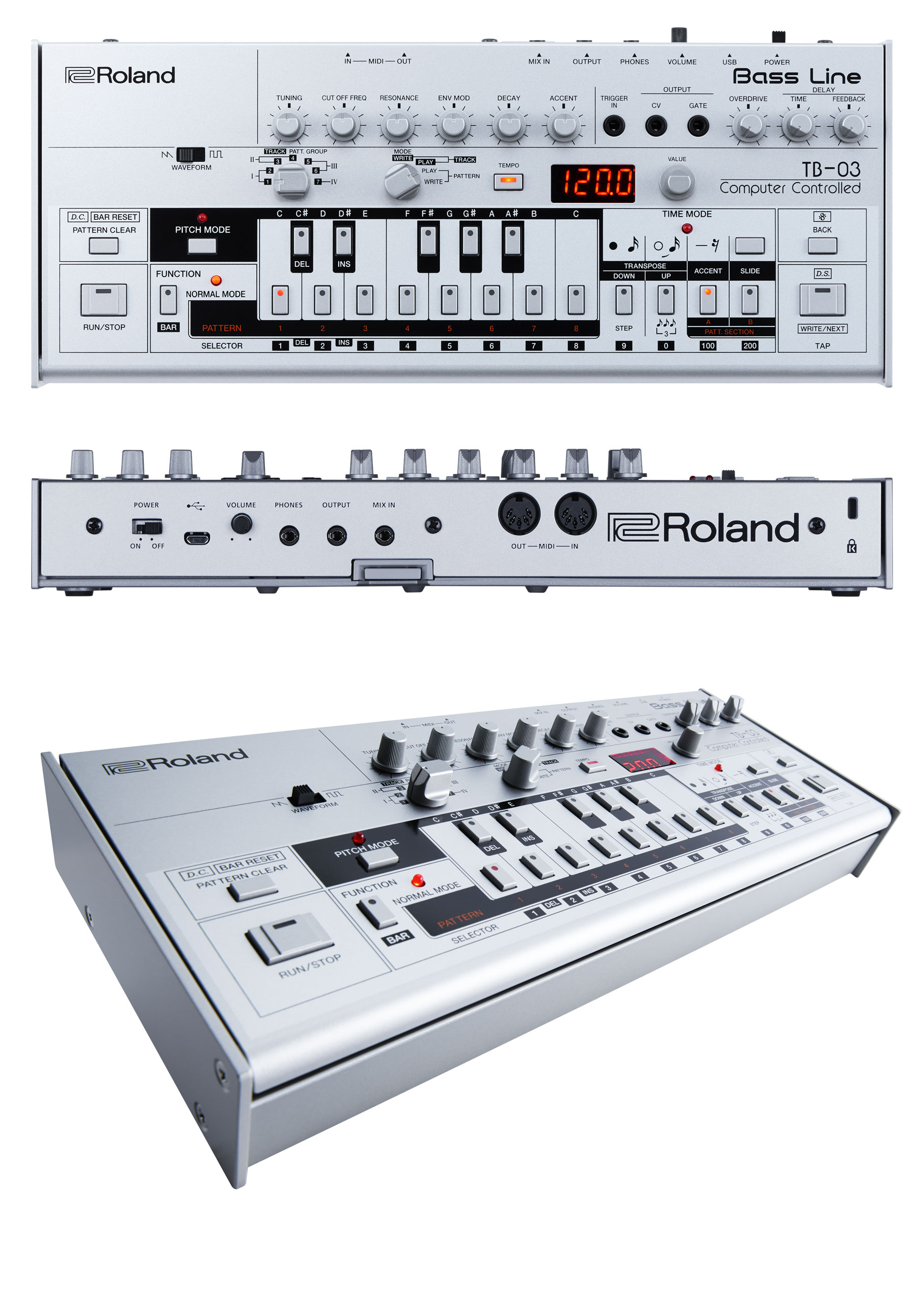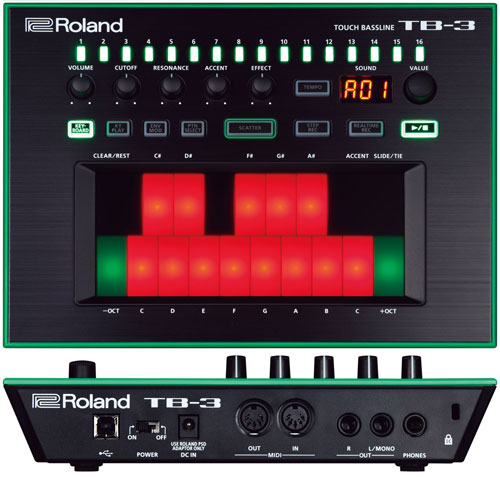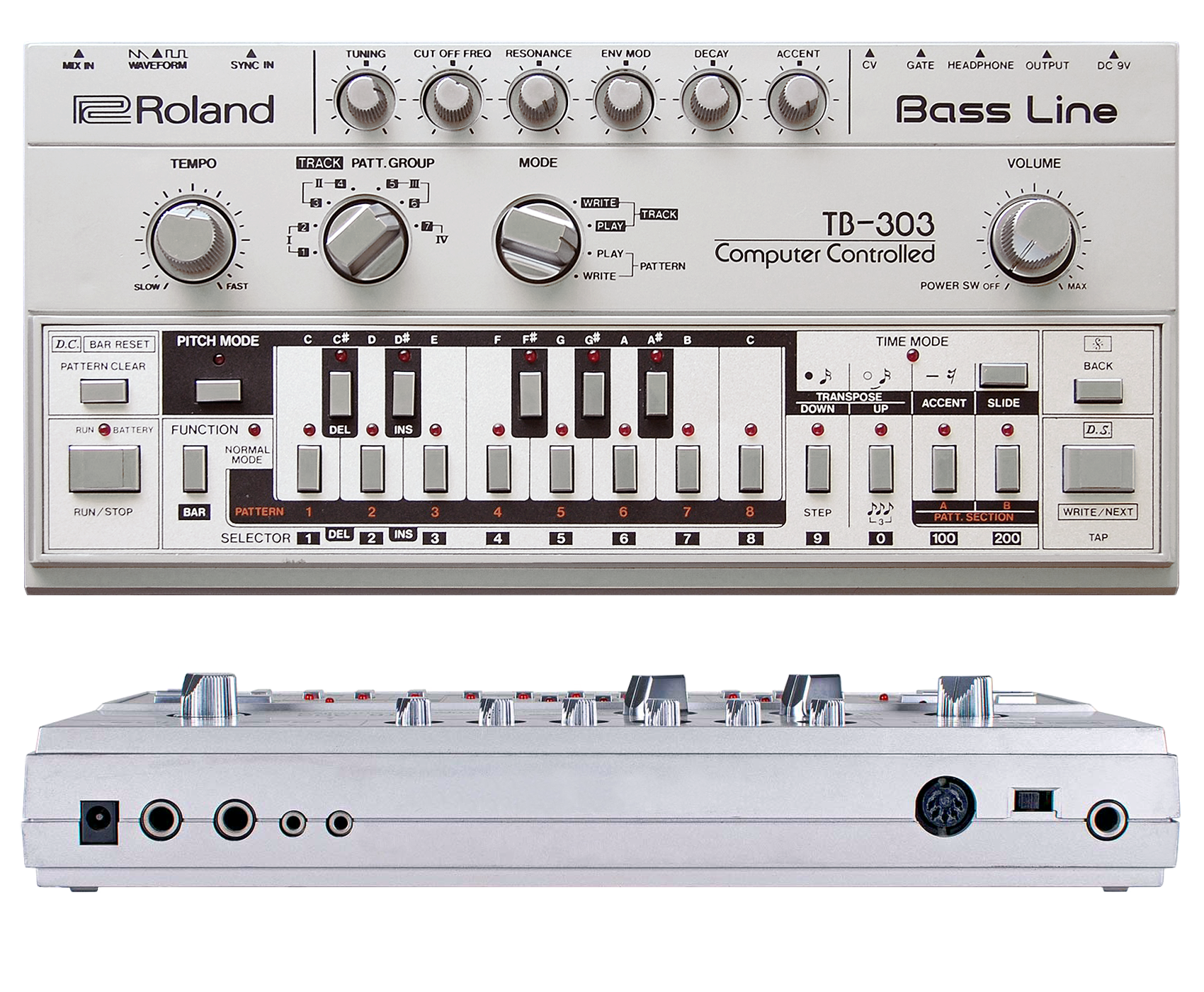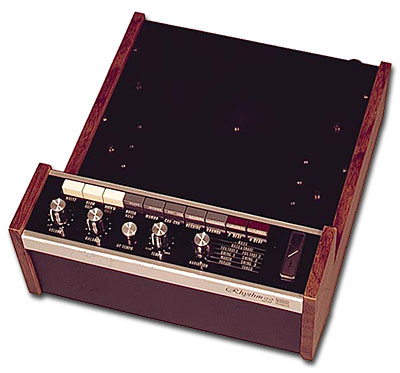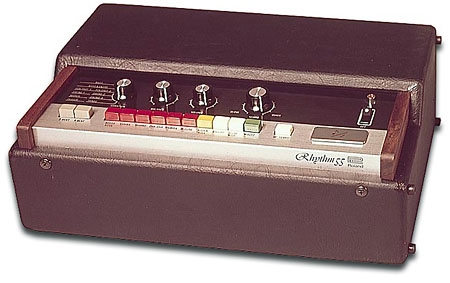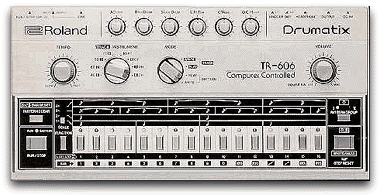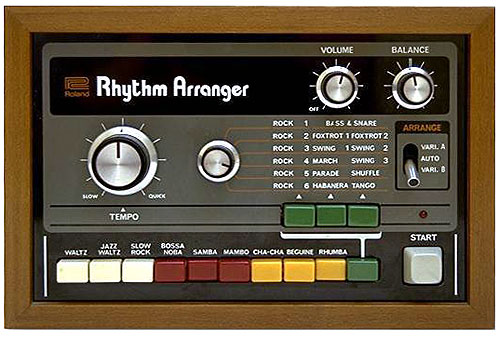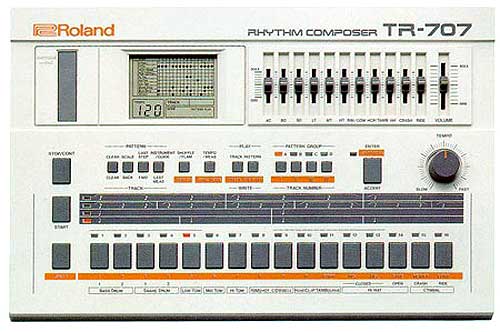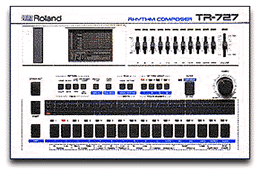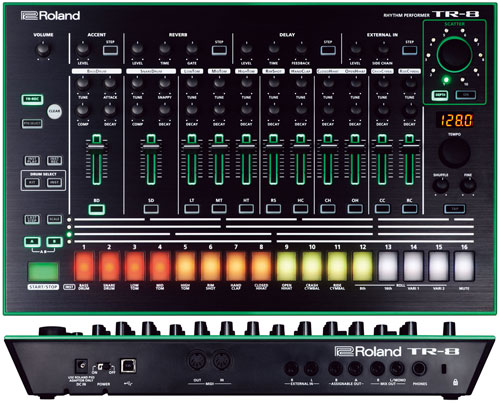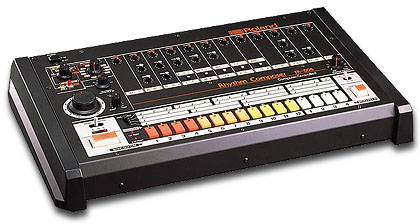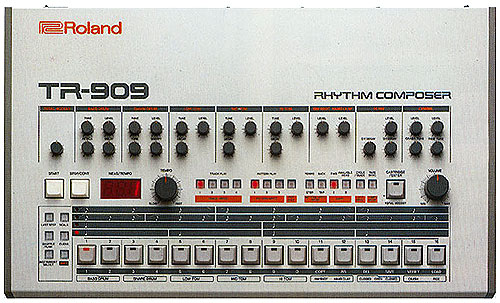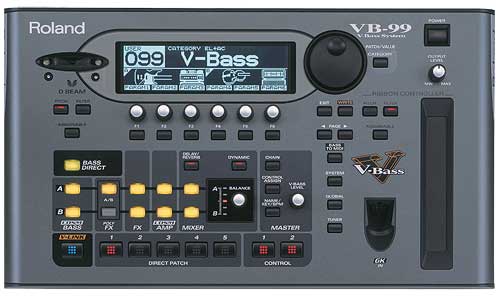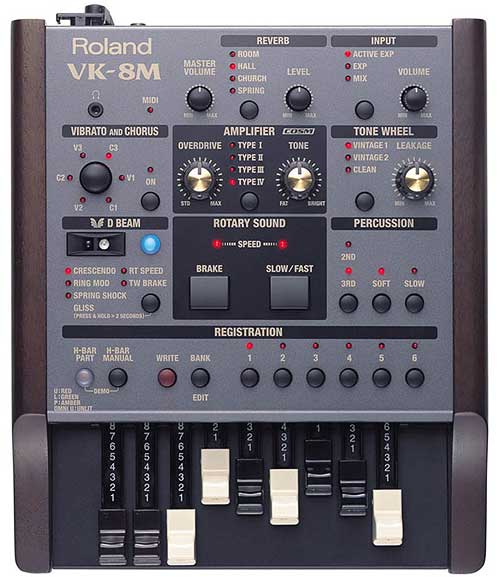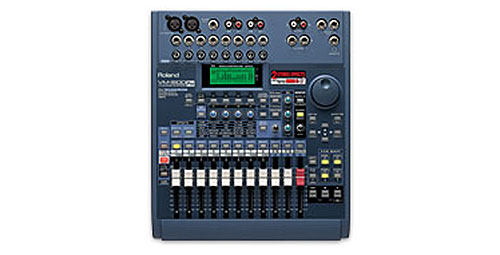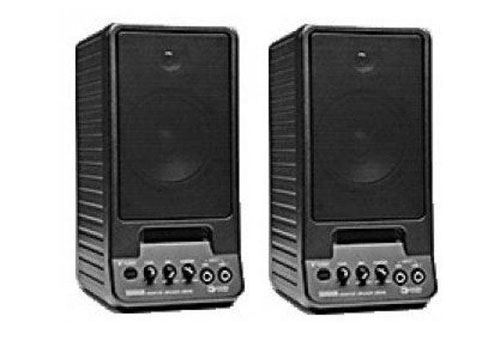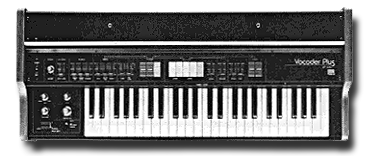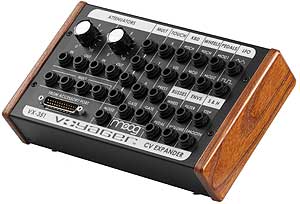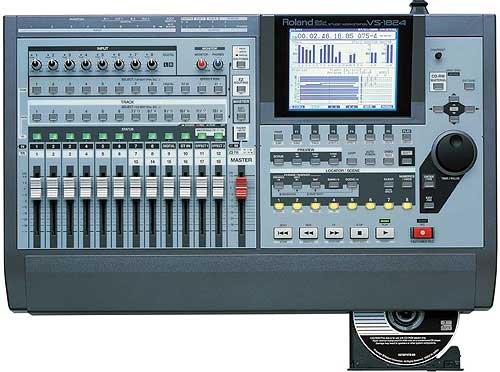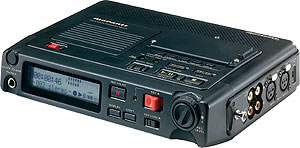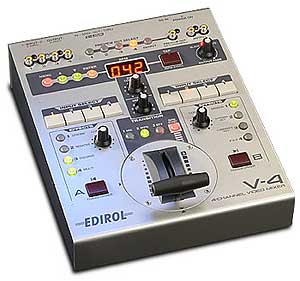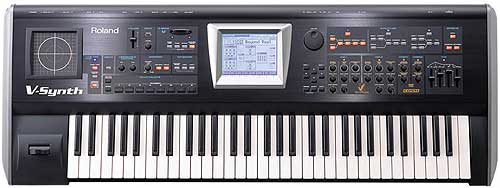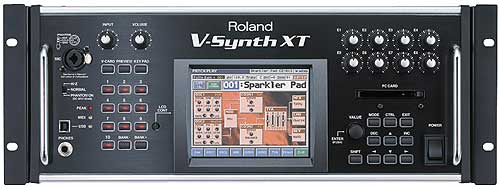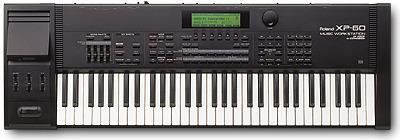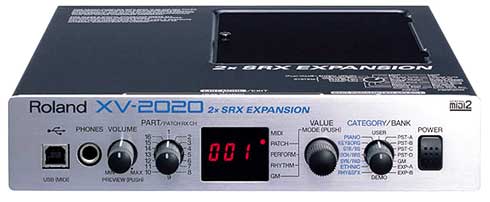Roland MC505
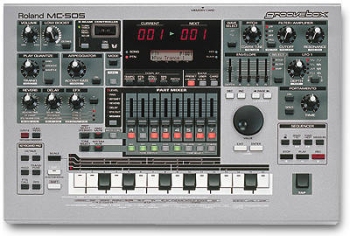
Category: Products / drum machines / groovebox drum machines
Added: 16-Mar-00 | Author: admin
New price: $1100.00US | S/H price: $700.00US
Company Link: ROLAND UK
Company Link: ROLAND USA
Roland MC505
The Roland MC 505
Alright, I been threatening to do a review of the MC505 for over a year now, I figured it was about time....
These boxes aren't exactly cheap, retailing new for around $1200.00US, and around $750-800.00US used. I've heard people say the box is way overpriced, and others who claim it's worth its weight in gold. My own opinion is that one could buy a separate system of sequencer, synth module, and a good combo controller synth for about the same price. Example, buy two MMT8's ($300.00 max), a used Emu Orbit (I've seen 'em for $450.00US), and a used Prophecy (seen as low as $400.00US), for a grand total of $1150.00US. You have about the same capability on most levels, more on others. For another $300.00 you could get an RM1x instead of the MMT8's and have more than twice the sequencing features you find on the 505, but I digress. The advantage (if you want to call it that) of having the 505 over a multi-piece kit like I just described is that it's all one box that works seamlessly with itself (at least that's the idea).
The 505, or Groovebox as some call it, has been well documented as far as features, bells and whistles, etc., but very little has been said about the 'actual' capabilities of the box. I don't feel it would add much to your understanding of the box to rehash the stuff you could read on Roland's own site, so instead I'm going to get into the pros and cons of the box.
First, the bits that are annoying:
714 preset patterns 512 preset sounds, 26 preset drum kits - while on the surface this sounds groovy (pun intended), the reality is I would much rather have had more user memory. Give me the option to overwrite the presets, for instance. A handful of the presets, especially the patches, are both good and useful, but most of the patterns and many of the sounds are really quite horrible. Not to say they can't be useful, almost anything 'can' be useful.
32 measure limit on patterns - not all that annoying since most of what I do, and dance oriented music in general, are based around 4, 8, and 16 measure patterns. Still, it would be nice to have a 48 measure pattern if I wanted to. One can always make two or more patterns to get the job done anyway.
Small User Memory - While the 505 'can' hold up to 200 User patterns, 256 User patches, and 20 User drum kits, the reality is the more complex patterns, patches, and drum kits take up the small memory of the 505 very fast. Realistically, expect to be able to have 256 User patches and 20 User drum kits (because the memory for them is already allocated), and around a hundred User patterns, eight measures long that have around 6 parts each (each pattern can have up to 7 parts plus the rhythm section). You can expand that memory substantially by getting one of the smart media cards for the 505. The cards can add up to five times more memory to the 505 (95,000 note capacity on the 505 itself, up to 480,000 note capacity on a 4mb card - the note capacity DOES NOT take into account all the memory that controller messages might take up).
Occasional glitches - the 505 actually operates pretty reliably. I've used mine for around two years now, both live and in the studio, and with few exceptions, it has been very solid. I've heard the early OS had a few glitches, so replace your's if it's not 1.07 or later (the update is available online from Roland - it's a simple MIDI file type update). My box has only crashed on me once, when I filled up the user memory. I tried to save a pattern I was working on, got the Memory Full message, but then the box hung and I had to shut it off, losing the pattern in the process (even the original user pattern was messed, for whatever reason the pattern name was still there along with the patches selection, but all the notes and controller data were gone). That happened once. Another 'glitch' I've experienced has been when using Song Mode to play back sequences. In rare but annoying instances, if you include an 'empty' measure User pattern (basically a pattern that's one measure long with no data - designed to be used for a 'drop out before the bang' break) in a Song, during playback the 505 will sometimes 'get stuck' for a second coming out of the 'silent measure.' This results in the pattern that follows the silent pattern not playing back but 'sitting' for a period that's always equal to a half a measure, then the box takes off again, merrily as ever as if nothing had happened. So you end up getting a measure and a half break as opposed to the normal one measure break, AND you miss playing the pattern following the break. I have yet to figure out why this happens, it may have something to do with there being no data or something as the few times this has occurred, it was remedied by replacing the one measure pattern with a another pattern, Preset or User, that was one measure in length, and then simply muting all the parts to the pattern (which is easy to do in the 505's Song mode). Finally, RPS sets don't always play back as expected. A smoothly recorded snare roll, saved to an RPS set, will sometimes play back as choppy or 'stepped.' Straight ahead, non quirky rolls and such playback fine, but more complex stuff with a lot of velocity changes or other controller data will occasionally sound a bit 'metronome-like.' This has only occurred with RPS sets. I've never had the problem with regular patterns. It pays to work out the kinks in these sorts of things as one can easily fix or avoid both of the latter two glitches quite easily. Not that you should have to, but you can.
Limited Sequencer - in addition to the smallish User memory and the expensive cards (expensive versus a floppy disk, at least), the 505 does not have extensive sequencing capability. It has one MIDI IN and one MIDI OUT/THRU. It can send and receive MIDI messages on all 16 channels, but as a sequencer it will only control channels 1-7 and 10. The RPS and Pattern Call functions, and some other minor bits can be controlled on various MIDI channels, but the 505 will only send sequences on the channels mentioned. The sequence capable channels are 'hardwired,' they cannot be changed, although they can be set to receive or send at your whim. You won't find a lot of nifty editing capabilities here either, the 505's LED may be better than the MC 303, but it's still a far cry from an MPC2000 or an RM1x. The sequencer's best resolution is 96 ticks per quarter note, which ain't bad, but it ain't great either.
Archaic Interface - Okay, I realize that maybe Roland was going for a retro look, but it's look only. 'Real' retro wouldn't force you to have to go through a bunch on menus to get to the ring modulator. However, given the want for a small 'footprint,' I suppose I can see why they chose to continue having some dual purpose knobs, buttons, and sliders. After all, small moving parts are not only harder to work with, they're generally more flimsy, and they inevitably drive up the cost. While the 505 has a far less cryptic interface than the 303, it still suffers from too many menus, in my opinion. At least all of the commonly needed controls are generally available without necessitating a dive into the menu pool. I can't really say what the ultimate interface might be, but the 505 is neither the best nor the worst.
EFX only output to the main outs - Although the 505 has six outputs, only the two main outs are used for the EFX routing. Sounds that are assigned to the direct outs are unavailable for EFX routing. In most instances this isn't a real worry. Many people, myself included, prefer outboard EFX over the EFX available onboard most synths. In any case, it would have been nice to have the optional routing to the direct outs available, just as an option.
And now for some positive remarks:
This box rocks! Plain and simple. I don't give a flying fu... a flying rhino what style of music you want to do, it can be done on this box. It might not be the perfect thing for, say bluegrass, or country western, although it might be alright, I dunno, but for most any style of electronic music, you're well covered. Now I can already hear the screams of protest in the back row about how the 505 doesn't have any good DnB patterns, or how there's no patches that really sound right for Goa Trance, or whatever. Well of course not! At least not until you make them. You see, in my opinion, the 505's strength is not in it's presets, most of them are lame, but no one's saying you have to use them.
This box has a modified member of the JV2080 synth engine family right inside, folks. It's not exactly the same, the sounds lean more towards dance stuff obviously, as opposed to the usual wide range of a JV2080 which covers classical instruments to ethnic percussion along with a ton of electronic sounds. So, there's no reason why you can't make your own sounds. A total of 505 waveforms are available in the 505 and they range from basic basses and percussion to oddball sound FX. Over half are based on electronic percussion sounds (i.e., there are 9 different 808 snare sounds). A patch can be made up of up to four waveforms, or tones, each. Each of the tones that make up a patch can be modified individually or in groups. Parameters that can be modified are: basic structure (how tones will be combined or 'stacked' - ten possible structure types are available), FXM (frequency Cross Modulation - good for creating very organic and often unusual sounds), Pitch (both a fine 1-cent step and a coarse one semi-tone step adjustment), Envelopes with real-time ADSR control for the Pitch, Filter, and Amplitude, Envelope Depth including Velocity Sensitivity and Velocity Time Sensitivity, Key Follow, four different Filter types including low-pass, band-pass, high-pass, and peaking, Cutoff Frequency, Cutoff Key Follow, Resonance, Resonance Velocity Sensitivity, Tone Level, Pan, Bias, Random Pitch Depth, two LFOs both capable of operating independently and which can modify a variety of parameters (like pitch, pitch depth, filter depth, panning, etc.,), 8 basic LFO waveforms, LFO Rate, LFO Depth, LFO Filter Depth, LFO Amplifier Depth, LFO Sync modes (including sync to tempo and key sync), LFO Fade mode, LFO Delay Time, LFO Fade Time, LFO Level Offset, Booster Gain, Ring Modulator, Stretch Tuning Depth, Voice Priority, Key Range, Velocity Range, Portamento, and Pitch Bend Range. I may have missed a couple... you get the idea. There's a lot one can tweak on a particular sound. Most of the commonly used parameters are controlled directly from dedicated knobs or sliders, and even though I've bitched about the 505 having menus, its menus are well laid out and generally not too many layers deep. Nearly all the sound parameters can be modified in real-time.
Six Outputs plus a Headphone out - Most cool. A major advantage when you're trying to isolate drums from arp sounds and so on. You basically have two main outs, whose levels can be controlled by the main volume knob, and four direct outs, plus the headphone jack (which reproduces whatever is coming out the main outs). One can set this up in a variety of ways, but my own setup consists of my mains handling the 'musical' output, and each of my direct outs are devoted to a different range of percussion sound as in bass drum on one, snares, claps, and rim shots on another, cymbals and hats on another, and 'other' percussion (like toms, congas, and special percussion sounds) on the final direct out. One could imagine a variety of different setups. As an alternate for instance, I sometimes put the 'other' percussion and cymbals together, freeing up one direct out to run a bass sound on.
Part Mixer - Very cool. With the sliders one can control the Level, Pan, Key Shift (+/-48 semi-tones), Reverb Send, Delay Send, EFX on/off, Output assignments, and Megamix. Some of the functionality is a bit sketchy, for instance, trying to adjust the Key Shift live is a touchy thing as it's tough to move the slider 'just the proper amount' for raising the pitch of a single part a third or something similar. It is great for fading parts in and out, panning, and adding delay or reverb to a sound, however.
Mute Buttons - You get Mute buttons for each part, 17 in all, including parts 1-7, the entire rhythm section as a single mutable part, individual rhythm tone mutes, one for bass drum, snare, hats, claps, cymbals, toms/percussion, hits, and other, and the 'Mute' part. That's right, you get a Mute button for the Mute part. Basically the Mute part is just like any other part, but it only records/plays back the muting and unmuting of the rest of the tracks for a particular pattern. 'Muting' the Mute button means that any 'mute' that you recorded into the Mute part will be ignored. When it is unmuted (i.e., on) the recorded mutes will happen normally. Confused? Good... let's move along.
Real-Time Control Knobs for EFX parameters - You can control four different parameters of the 505's Reverb, Delay, and EFX modules. Reverb controls include Reverb Time, High Filter Damping, EFX to Reverb level (meaning the amount of Reverb applied to an EFX sound like Distortion, Flange, etc.,), and Reverb Level. Delay controls include Delay Time, Feedback, EFX to Delay level, and Delay Level. EFX contols include three controllers plus an overall level control. The three controllers vary between effects as to what parameters they control. For instance controllers 1-3 control high, peak and low gain respectively when you are using the 4-Band EQ, but the same controls are Noise Filter, Lo-Fi Level, and Noise Level when the Noise effect is being used.
Sequencer - Yeah, I know I just got done bashing it, right? Well, what I pointed out above is true. The upside is that the 505's sequencer can be used a lot like the old style TR909/TB303 type sequencers, and I happen to like working that way. Basically you have real-time, step, and grid step recording methods available. The 'grid-step method is like the old style 16 step sequencers. You can come up with a basic drum pattern and a bassline using this method in about thirty seconds, not including save times. Well, maybe it takes a bit longer on average, but I'm talking about those times when you realize your boyfriend/girlfriend/SO just accidently wiped all your User settings out and you have to reenter your whole set with just fifteen minutes to showtime. Has this happened to me? No, but it's a good story nonetheless. In Microscope mode, almost any data (notes, CC's, etc.,) can be changed quite easily. You can 'reclock' notes without a problem, halving or doubling the playback timing quite handily, too.
Okay, so there's some good and some bad. Now for the in between:
The Megamix feature - Interesting and semi useful. It basically allows you to mix parts between various patterns (within a certain range). You can take the bass (part 2) from pattern 5 for example and change the part information from that to the part 2 on pattern 10. The entire part is changed (temporarily, unless you save it to a user pattern) to the new part including patch, notes, controller messages, everything. This feature is fun to fool around with and I have occasionally gotten very usable results doing it, both with preset and user patterns.
Pattern Call - A useful feature. It let's you register up to 16 patterns into 30 different pattern sets. When you call a pattern from a pattern set, you are essentially using the keypads to call up patterns. A nifty feature of this function is that you can register preset patterns with 'non preset' settings, meaning you can change the patterns patches, EFX levels, panning, etc., then 'register' the pattern in a pattern set, and when you recall the pattern, it will playback with the 'adjusted parameters rather than the default. Gives the presets a bit more life in some instances. Most are still hopeless anyway. Regardless, the same holds true for setting up patterns in Song mode. Patterns can be modified (things like patches, levels, delay, and so on, but not actual notes or recorded controller data) while recording in Song mode and when they are played back they will retain the modifications.
User Drum Kits - You can store up to 20 internally, more on smart media cards. You can really tweak the shite out of the drums kits, adjusting every single tone from tuning/detuning the pitch to assigning which output the individual tone will be routed to. You can route a single rhythm set's tones to any or all of the outputs in pretty much any combination you want. The rhythm tones can be tweaked and adjusted by the same controllers and by using the same parameters that one can with the rest of the 505 sounds/patches. Tones can be mixed and matched in any way you choose, including creating your drums sounds from any other tones on the 505. In other words, you have little in the way of excuses for not having a drum kit or three that you really dig.
Groove Quantize - Nice functionality, allows for Quantization via Grid, Groove, and Shuffle. Depending on the type, you can modify swing, dynamics, resolution, and velocity. There are 71 distinct types of Groove Quantize ranging from Dance style grooves to Salsa Boogie, and this is in addition to the basic Grid and Shuffle Quantize options.
Good Filters - Not the steepest of the steep, but the 505 has a very respectable set of filters. While the steepness of the filters is a plus, some sounds will reveal the 505's digital soul, and a good ear may note slight filter stepping on really slow moving sweeps.
Dbeam controller - For those who think gimmick, I tend to agree. The Dbeam does have its place, especially for spicing up a live set. It basically operates by using an infrared beam which you can cross by waving your hand or other body parts in front of it. This will then cause an effect to happen depending on what you have the Dbeam controller assigned to. Basic effects include a Turntable effect (tempo controller), a Cutoff controller, and AdLib (my fave) which let's you play notes (kinda like you do with a Theramin) with the Dbeam. It can control any of 28 different controls, some work good, others are not so good. I'm still trying to figure out how to get it to make hot chocolate myself. Honestly though, you can 'showboat' a bit with the AdLib feature for instance, doing little wavy motions with your hand that create an 'undulating' melody for a synth part. You can do some fun, but limited turntable effects, too. I've heard under the right conditions, you can use it as an aid to summoning demons. Still experimenting with that bit.... In any case, it's an extra controller you can assign.
Low Boost - Very functional, less mushy than the 303, with the added advantage of the low Octave button. The Octave function will add a second note to a sound, one octave below the normal note. Combining this with the Low Boost feature can seriously destroy an non-limited PA.
Arpeggiator - Again, better than some, less than others. The 505's arp is solid and flexible, capable of internal and external triggering as well as being able to send out arpeggios to other synths, samplers, etc. Several styles (over 50 including the User styles) and motifs (over 20) are available and beat patterns, shuffle rate, accent range, and octave range may all be modified according to most tastes. You can create User arp styles, but not motifs. Most common motifs are well covered, and for something more specific, you can simply sequence the notes into a pattern.
RPS sets - They do the job. Typical Roland on this one. They work, there are 60 (all capable of being User sets), and they make creating stuff like bass drum rolls, or FX stabs, or overused sequences much easier to get to when working with the box live. They are quite easy to set up and they can be created from User or Preset pattern/parts. RPS sets can be triggered via MIDI from an external controller.
Smart Media Cards - very useful but pricey. Most sell for between $40 - 70.00US. Hint, if you're planning on really using the box a lot, get a couple of cards (one just as a spare), and then get one of the FujiFloppy Adapters for the smart media cards. You can back up and swap data from cards right on your PC. Card gets full, but you're in the creative mood. No problem, you just dump the current card to your computer, reformat the card in the 505 and bang, you're back in business with an essentially infinite amount of backup. If you need to get the old data back onto the card, it transfers back as easily as transferring to a floppy disc.
Overview of use:
Damn skippy machine! The thing you have to remember is this is a digital machine. It's not analog or virtual analog, although you can 'fake' an analog sound to some degree if that's what you're after. It can make some amazing sounds, but if you're only going to be satisfied with analog, don't bother with this box. It works very well as a 'brain' for controlling other synths in a dance kit setup. It can also be used quite successfully for Industrial, D&B, Ambient, Pop, Hiphop, and most other forms of electronic based music. My main bag these days is Dark Ambient and the 505 still serves me well. I have played entire dance sets using nothing but the 505 with great results, and if you add a good sampler and keyboard controller (a nice VA synth like the Prophecy or the AN1x for instance) you can cover pretty much anything you can imagine. The real-time control on the box is phenomenal. You can play whole sets off of patterns alone, change tempo on the fly, call up RPS sets, tweak EFX in real-time, do whacked tricks like DJ spoolouts via using the pitch controller on the drums, you can do fat bass or snare drum builds by using the built in arpeggiator, gradually building the roll from 8ths to 16ths to 32nds, and more. In a live set you can choose to run in Song mode, and the 505 will 'do it all' or at least most of it, for you, freeing up your hands for tweaking other bits of kit, or getting a new batch of samples loaded into your favorite sampler. In pattern mode you can get widely creative, jumping between patterns, using the pattern call function, and applying all the other real-time controls to create an entirely inspired improvised performance.
This is not an end all be all box. I don't think that exists for under a hundred grand. It won't make the music for you, you still have to do that. What it can do is be the centerpiece in a live electronic kit. It can function solely as a sound module. It has an adequate sequencer. It can fit under your arm or in a nice carry case when you travel. It is an exceptional tool for creating music. It is 'groove approved.' Okay, so the last bit is really not terribly positive. I have used it to play live sets that included ambient, D&B, trance, dark ambient, industrialesque, pop, bluesy, and heavy rock/metal styles. It's rarely ever the only noisemaker present at these events, but it is certainly the backbone in most cases. Would I buy this box again. Probably. I haven't really looked around for awhile so I don't know what's the supposed 'latest and greatest.' The fact that I'm already familiar with it would, of course, bias my opinion. I will say that the box isn't hard to learn. It's fairly intuitive, and Roland actually wrote a pretty useful manual for it. Like a lot of machines, what is available on the surface is a pale representation of the potential it is capable of. It would almost certainly be impossible to create a box that pleases everyone, and the value of any said piece of equipment is no more or less than its potential value to the musician. In the same way that not every musician would find an oud to be of much value, some will feel the 505 is overvalued. Others will make it into their Holy Grail. I fall somewhere in the middle. It is a highly useful tool for my particular way of working. I can imagine better, but this is good. For certain styles of music, you're almost surely going to want to add a sampler , or a particular synth, or whatever, but the 505 can still handle most of the sequencing/brain type chores, in addition to having it's synth engine standing by if the need arises. It's drums are great, one of my favorite parts of the 505. I've made about forty different kits altogether, all versatile and distinctive, and all are capable continued tweaking, both while sitting in the studio or when pounding the dance floor.
If you already have a few good synths or sound modules laying around, along with a decent sequencer, you probably don't need or want the 505. Same is true if you have some synths/sound modules, and you mainly work through a software sequencer like Cakewalk or similar. There would be little point in adding a 505 when better, more useful options are available. If you're looking for a good combination of live sequencer and sound module, the 505 rocks. If you want an incredible drum machine, the 505 positively does it. If you need a combination box, it is one of the most versatile. If you want to create the most extreme of analog sounds, you want a box full of orchestral sounds, you want to sequence Carmina Burana in its entirety, or you need a box that will write music for you, then stay clear of the 505. If you would like a machine that has some great sounds on it with a decent capacity for making more, if your sequencing needs are not terribly complex, and if you want a remarkably powerful tool for making electronic music, especially live, the 505 is worth checking out.
Peace All
Product Manuals or Files
Product Resources
More choices in this product category from other manufacturers:
Category: Products / drum machines / groovebox drum machines
User Comments
Product: Roland - MC505
Name: mustapha
Email: Email supplied but hidden
http://www.mustapha1.homestead.com
Activity: Hobby-ist
Date: 24-Apr-00
its a verry good tools for creating awesome drum grooves
easy to use and alots of options that help d-js to constract all kind of music
| Product rating out of 5: |
Product: Roland - MC505
Name: stizu
Email: Email supplied but hidden
Activity: part-timer
Date: 25-Apr-00
i went to a large music retailer to check out some of the stuff i read about on this site with the specific intent of checking this box out. i went to it and pressed some of the keys, not bad. however when i went to the task of making a drum groove... an hour later wasted attempting to read the manual i figgered out how to step sequence. however all i really wanted to do was to use the keys for a real time X0X type sequencing feel, after jamming through untold amounts of menus and a whole lot of guessing i finally got it to do that. the only problem was the sound that i thought i had applied to each pattern kept changing.?!?!?! wtf? oh well i saw the korg er-1 and i hadn't thought much about them in the past but i decided it couldn't be much worse than that 505 travesty. wow, no menus!!! and real time sequencing!!! oh sorry about the part where it turned in to a korg ad but i am quite overjoyed with my little boxes. however i intend to balance it with a jp-8000. analog modeling forever!!!
| Product rating out of 5: |
Product: Roland - MC505
Name: Mike
Email: Email supplied but hidden
Activity: Hobby-ist
Date: 26-Apr-00
You say - "714 preset patterns 512 preset sounds, 26 preset drum kits - while on the surface this sounds groovy " then "A handful of the presets, especially the patches, are both good and useful, but most of the patterns and many of the sounds are really quite horrible. Not to say they can't be useful, almost anything 'can' be useful."
I don't understand what you mean by "patches". You say you get x# of voices, x# of patterns, and x# of drum kits. Then you go on about a few patches that are good. For the life of me I can't figure out what you mean. :(
| Product rating out of 5: |
Product: Roland - MC505
Name: Mike
Email: Email supplied but hidden
Activity: Hobby-ist
Date: 26-Apr-00
You say - "714 preset patterns 512 preset sounds, 26 preset drum kits - while on the surface this sounds groovy " then "A handful of the presets, especially the patches, are both good and useful, but most of the patterns and many of the sounds are really quite horrible. Not to say they can't be useful, almost anything 'can' be useful."
I don't understand what you mean by "patches". You say you get x# of voices, x# of patterns, and x# of drum kits. Then you go on about a few patches that are good. For the life of me I can't figure out what you mean. :(
| Product rating out of 5: |
Product: Roland - MC505
Name: Bakley
Email: Email supplied but hidden
Activity: Hobby-ist
Date: 17-Oct-00
Yeah its great and I never regrate buying it !!!
| Product rating out of 5: |
Product: Roland - MC505
Name: tba03
Email: Email supplied but hidden
http://www.mp3.com/muzik4machines
Activity: Professional
Date: 17-Oct-00
i lov emine BUT, al presets are crap and unusefull...the knobs feels cheap, the filter sounds digital...but i love it
| Product rating out of 5: |
Product: Roland - MC505
Name: Roland
Email: Email supplied but hidden
Activity: Professional
Date: 16-Mar-01
You'll have to know the MC-505 (for the patches, voices, etc), or find some information at Roland's website before you cn understand it!!!
| Product rating out of 5: |
Product: Roland - MC505
Name: Roland
Email: Email supplied but hidden
Activity: part-timer
Date: 11-Sep-01
...
| Product rating out of 5: |
Product: Roland - MC505
Name: Sota Fujimori
Email: Email supplied but hidden
Activity: Professional
Date: 22-Jan-02
This is what you called piece of shit.
Only for beginners who can't afford to
buy synth or don't know how to play
music. Wake up people, get a real
synthesizer man!! What's wrong with
Roland these days with all those stupid
groove boxes. They used to make really
good synthesizers long time ago you
know.
| Product rating out of 5: |
Product: Roland - MC505
Name: Chris Mar
Email: Email supplied but hidden
http://www.trancegroup.com
Activity: Professional
Date: 22-Jan-02
I was the first to obtain the MC303 and I was first to get the first and the first to get 2...MC505 on Taiwan as I snuck it in from the UK and from LA when they were floor Demos, Also the first to grab the second unit for back up, and different studios. My partner in crime the multimediaguy.com Mark! Yo...I travel and have a bulletproof case for the 505 and when I go on tour I am writing to the 505 at the airport at the hotel, ni the lockers... The Sony MDRV700 Cans rock the 505 and visa versa,As much as I love the unit and its as indespensible as a production scratch pad, it ain't the Jomox or the Virus. But the Virus needs to have a sequencer (Mark at Access, are you hearing this there?). OK Mindspawn, very hip article, I have a killer demo all on 505 thats classical and trance in one..if you are interested, thanks for the great inside insights. The D-Beam is very cool for Flute and other mprov..I play oriental music and it is suibtle if you step edit. The only problem is when you want to stop the sustain and end the note there is no way to cut the d-beam off smoothly, needs a limiter on the beam. I think the secret to the MC505 is the Step Edit, click the record twice or thrice and step your way through each and every note. Radical sounds but weak filters and my verdict is I can't live without it, but I cant use the sounds. By the way I need some spare parts, the stop button and the scale button are gonzo. HELP, and the cables are getting shorter inside,, the 10 wire one for the volume and that sub section.. I will pay gold..
Chrismar
| Product rating out of 5: |
Product: Roland - MC505
Name: fred
Email: Email supplied but hidden
Activity: Hobby-ist
Date: 06-Feb-02
yeah had mine for about 3 or 4 years now i dig it but only because i can use it with my eyes shut. really crap preset patches but massive scope for custom sound creation esp. basses - layer apon layer. only really use it as a sequencer for my emu sampler. any specific questions feel free to mail me
| Product rating out of 5: |
Product: Roland - MC505
Name: simon
Email: Email supplied but hidden
stylexs.cjb.net
Activity: Hobby-ist
Date: 07-Jul-02
I've owned my mc for 4 years right now. I fell in love with Roland, I bought sp808, boss sp202 and last mont I purchased yamaha rmx1. I also have kawai k1 keyboard that I've just hooked up to the mc505. It works awesome, since the keyboard on the mc is not touch sensitive and doesn't sound as sweet as the k1. So if you got a 505, you should hook up any keaboard to it so you can control thousands of sounds that it has in its memory. Go buy this box, it's worth the money. Good buy. And it sounds sweet, good rhythm for trance, dmb, house, hiphop and abstract. It's capabilities are endless, it will take years for me to fully figure it out. It could be better, but oh well, so could everything else.
check out my website for more info or questions.
| Product rating out of 5: |
Product: Roland - MC505
Name: Dawn
Email: Email supplied but hidden
-
Activity: Hobby-ist
Date: 25-Aug-02
Where can we get a Roland mc505 sound collection smartcard?
Also, can you tell me how much they cost?
| Product rating out of 5: |
Product: Roland - MC505
Name: Stewart McFarlane
Email: Email supplied but hidden
www.adaptability.co.uk
Activity: part-timer
Date: 04-Sep-02
Where can I get mixermaps from?
| Product rating out of 5: |
Product: Roland - MC505
Name: JD Babe
Email: Email supplied but hidden
www.jdbabe.com
Activity: Professional
Date: 30-Dec-02
HAAA!!
People who think that 505 is a shit are very wrong. 505 is based on JV technology and that modules are great so MC 505 IS BIG MACHINE!!
If you use MC preset sounds than this machine is not for you.(KILL PRESETS MAKE YOUR OWN SOUNDS, MC 505 IS A KING FOR THAT JOB)
| Product rating out of 5: |
Product: Roland - MC505
Name: Jugaris
Email: Email supplied but hidden
www.jugaris.tk
Activity: Hobby-ist
Date: 24-Jun-04
I have lost my manual!!!
; -(
| Product rating out of 5: |
Product: Roland - MC505
Name: Tom
Email: Email supplied but hidden
Activity: part-timer
Date: 13-Dec-04
I love my groovebox! However, it has been a hard battle. First, had to fix the circuit board, had my resonance filter knob almost fall off, and now the display is crapping out. Also, I never had any information or a manual until recently, I got some support notes off rolandus.com.
What I need is to know why I am having trouble with the display. When I try to select a ARP type, or D-Beam control, EFX, as I scroll through the list (if I get that far), the display jumps to resonance info! ARGH! I want to play live with this box, but only if it is stable. Also, need a manual and smart card, anyone know where to find?
Cheers!
| Product rating out of 5: |
Product: Roland - MC505
Name: edwin
Email: Email supplied but hidden
no
Activity: Hobby-ist
Date: 10-Jan-05
doesn anyone know where i can buy a MC505.
let me know email me
| Product rating out of 5: |
Product: Roland - MC505
Name: Mike
Email: Email supplied but hidden
Activity: Hobby-ist
Date: 09-Dec-07
I have just changed my faulty LCD display which gets heat damage over time. The LCD sandwich splits open and displays bad characters. Open up the box and keep all the screws in a cup. You have to remove the entire circutry to get to the diplay. Once you are there take a screw driver and pry off the front face plate. It is glued with double sided tape. Remove the four screws holding the display and pop in the new one. Roland part #01343223.
Be careful when reassembling and don't do what I did. I forgot the power connector and when trying to fire up nothing happened. I had to open her up again! it's easy just take your time.
| Product rating out of 5: |
Last added comment
Product: Roland - MC505
Name: musikmacher0241
Email: Email supplied but hidden
Activity: Hobby-ist
Date: 23-Jan-11
suche sound patsches f�r die roland mc505! kann mir jemand welche schicken wehre sch�n.
| Product rating out of 5: |
'Roland MC505'
Looking for the manual? - Check this page above under the heading: 'Product manual or files' - We might have it!
Note: To cut down on spammers, cookies must be enabled to post comments to this page.
Looking for the manual? - Check this page above under the heading: 'Product manual or files' - We might have it!
[back to top]
Total stars: 77 | Total votes: 22
160 other
products from
Roland
Thomann deals
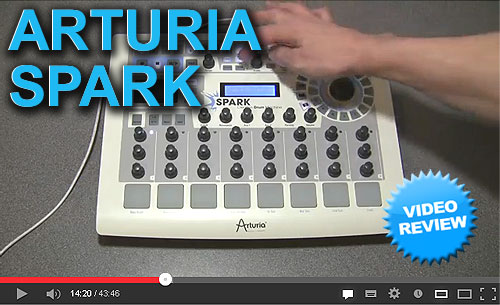
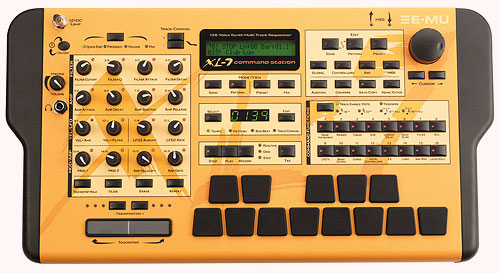
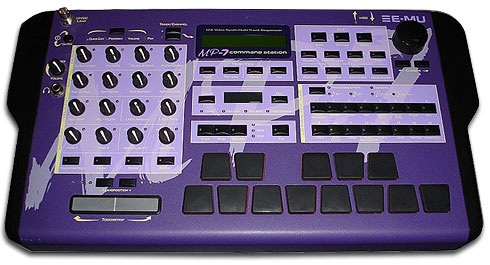
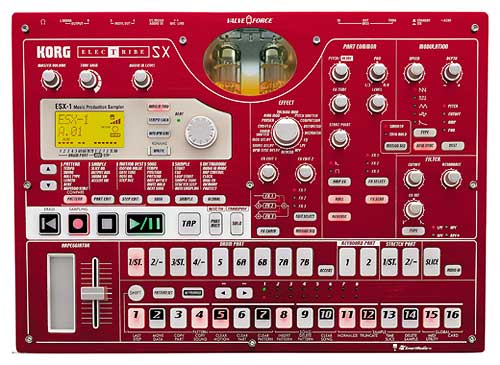
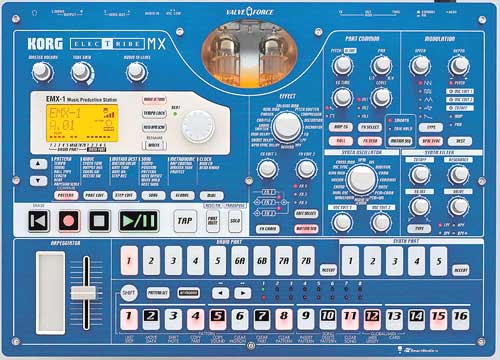

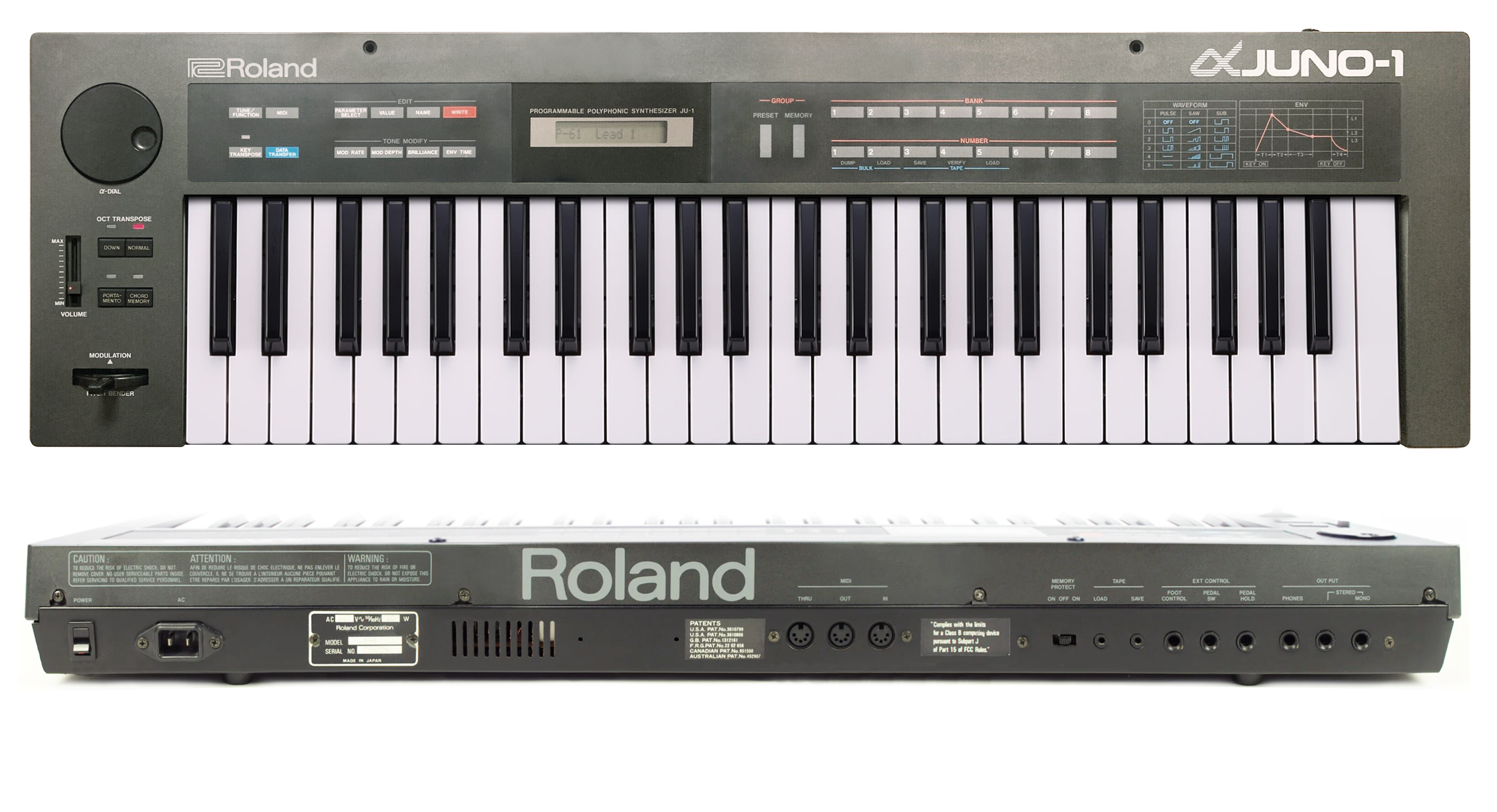
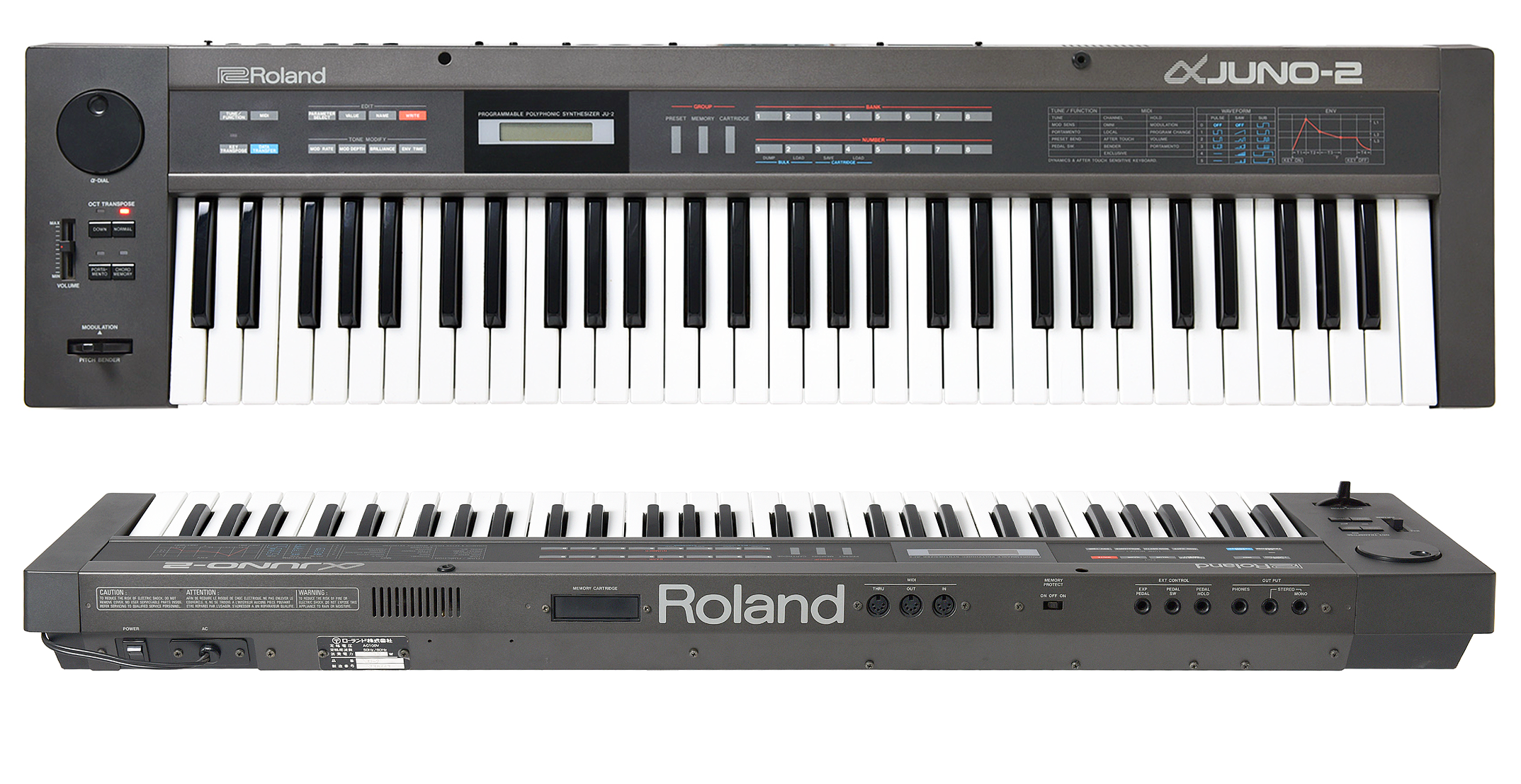

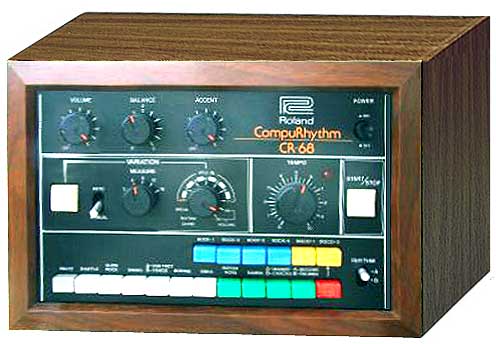
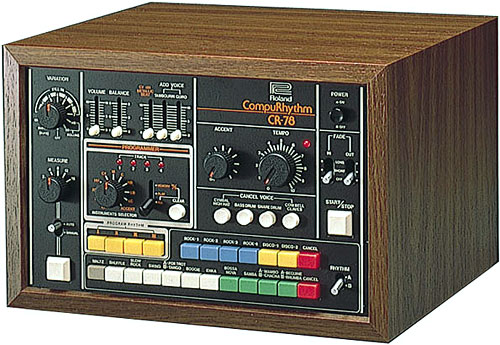
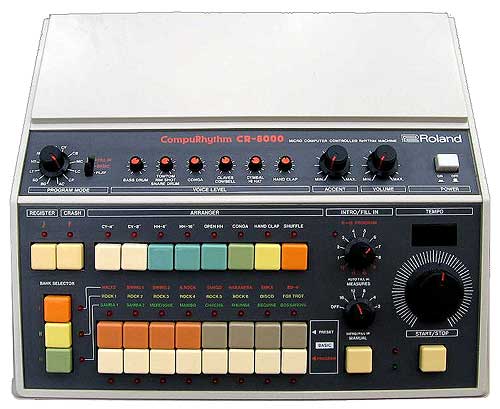
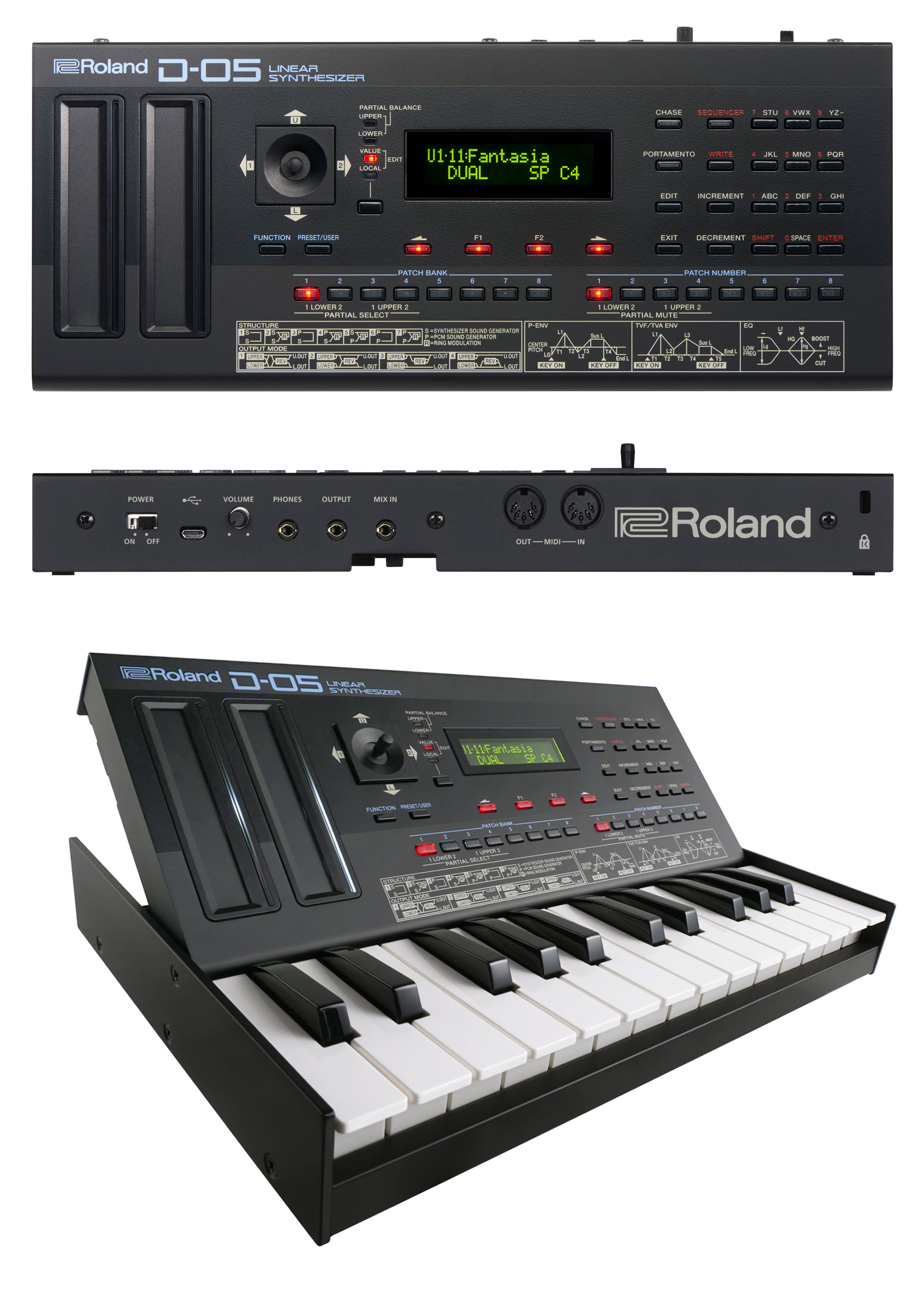
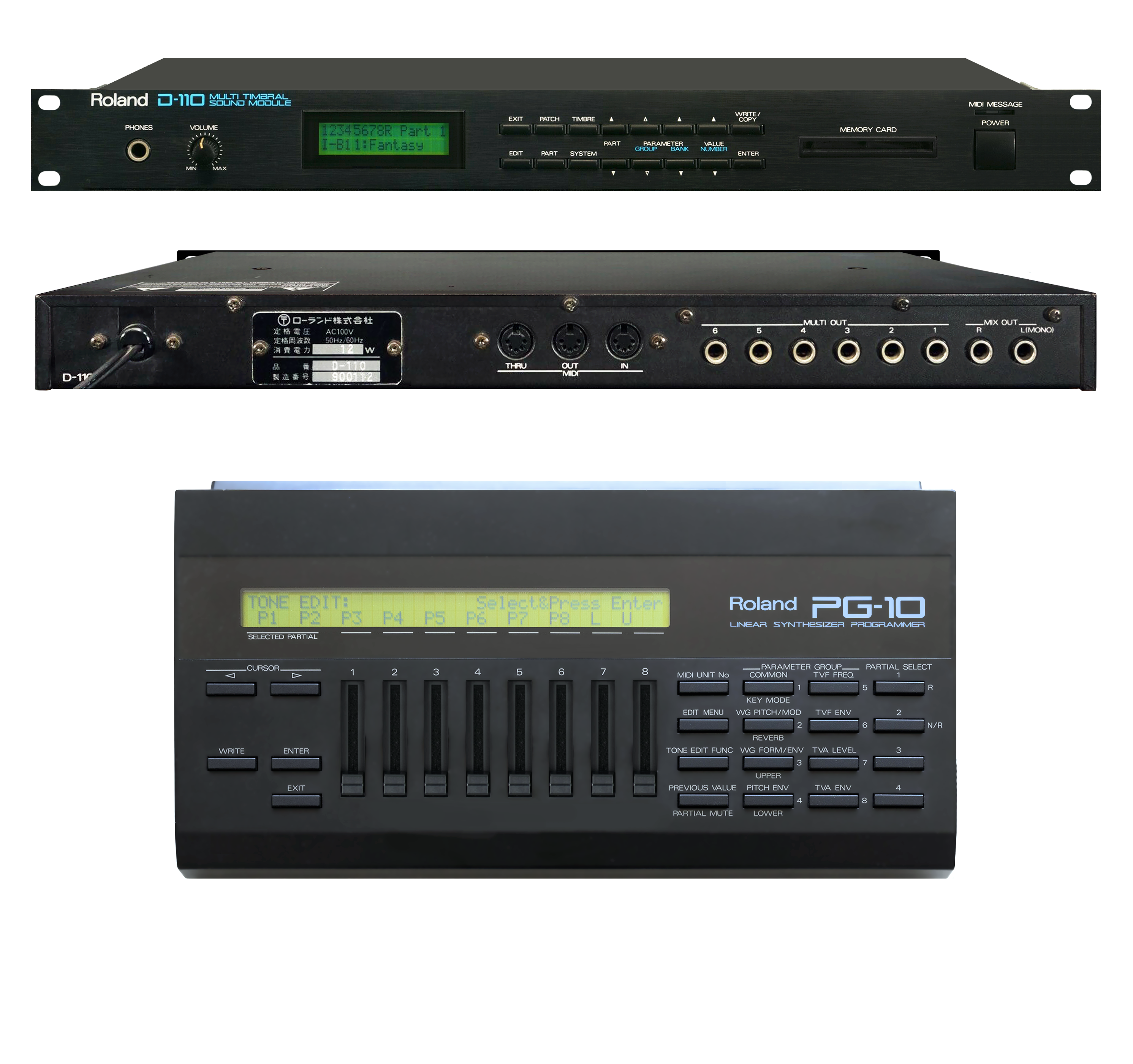

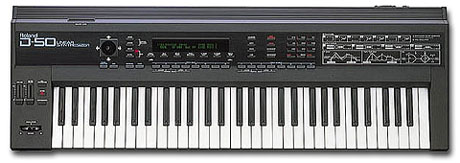
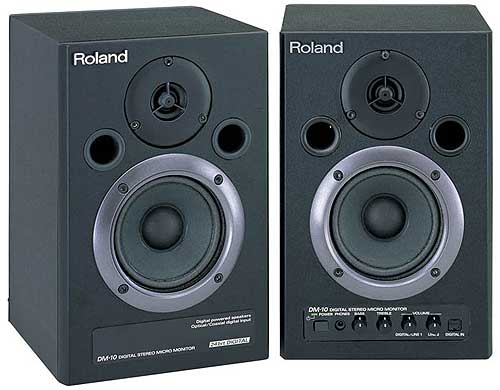
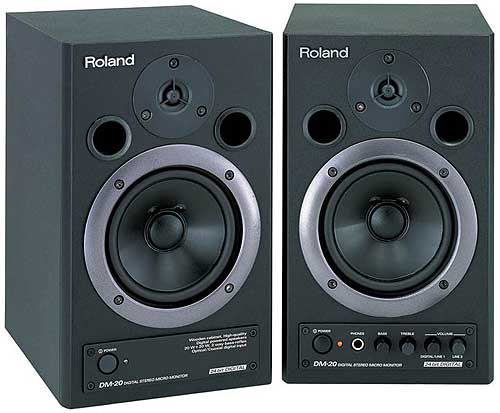
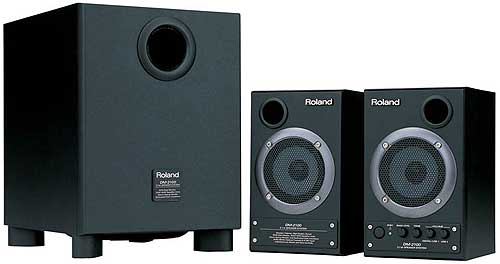
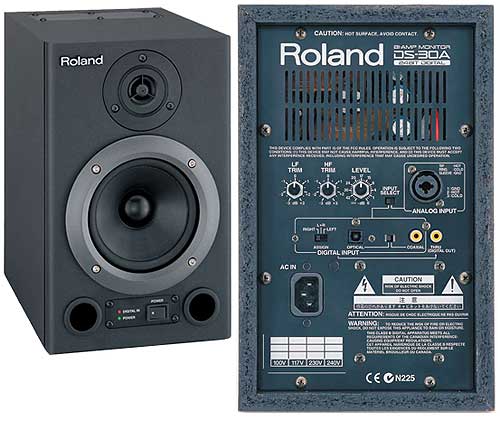
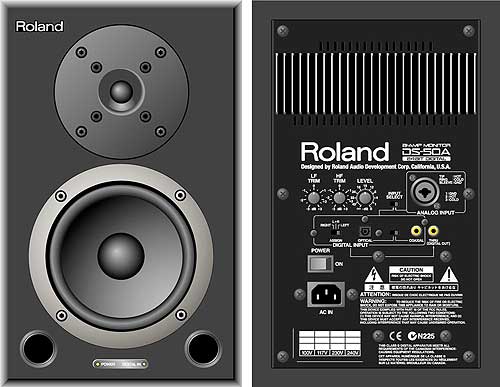
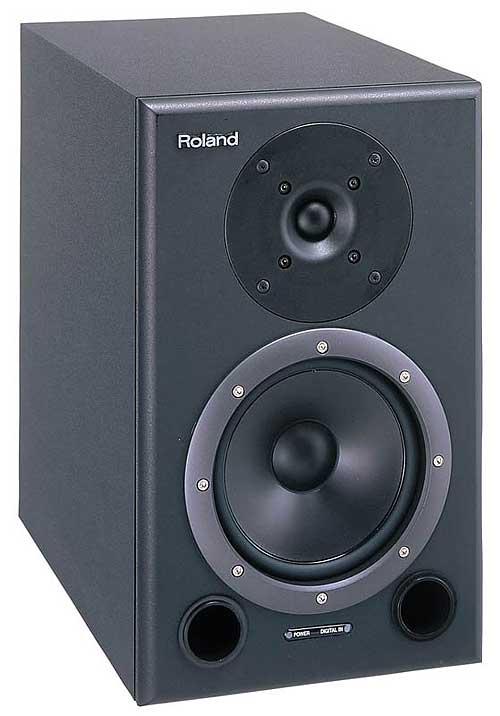
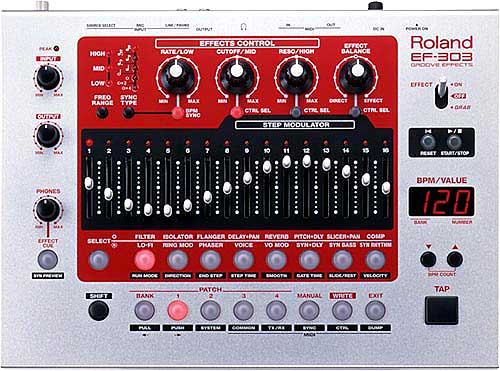
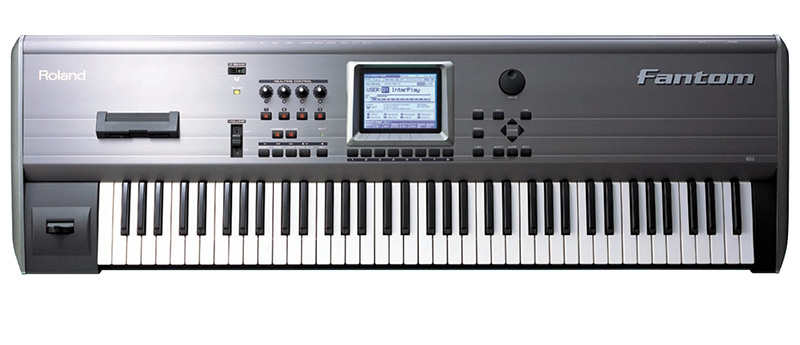

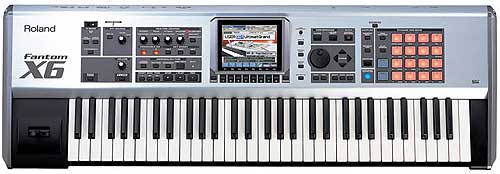


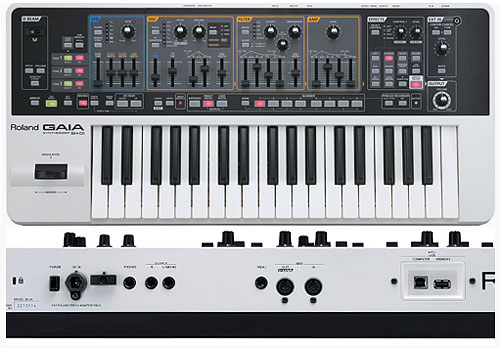
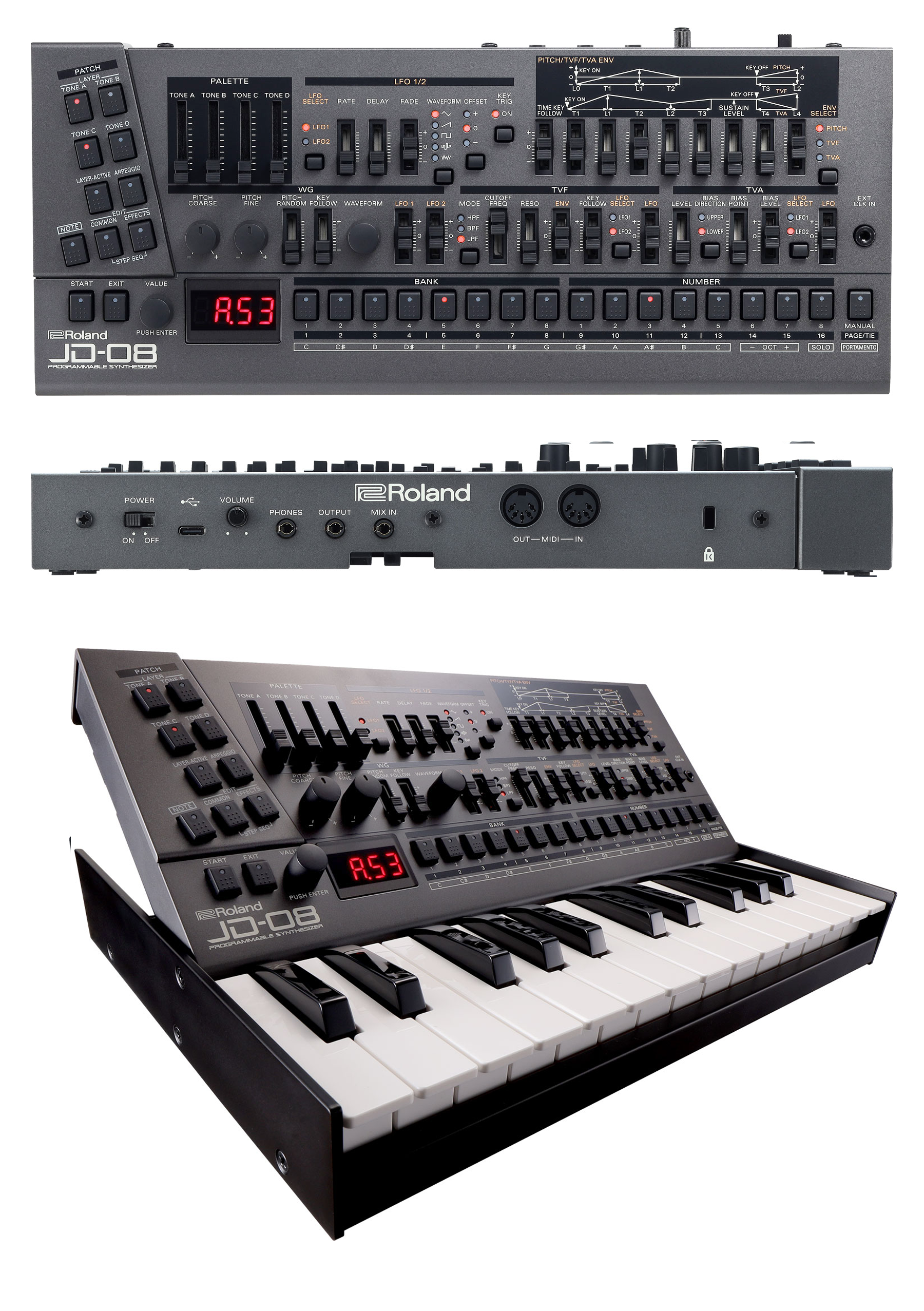
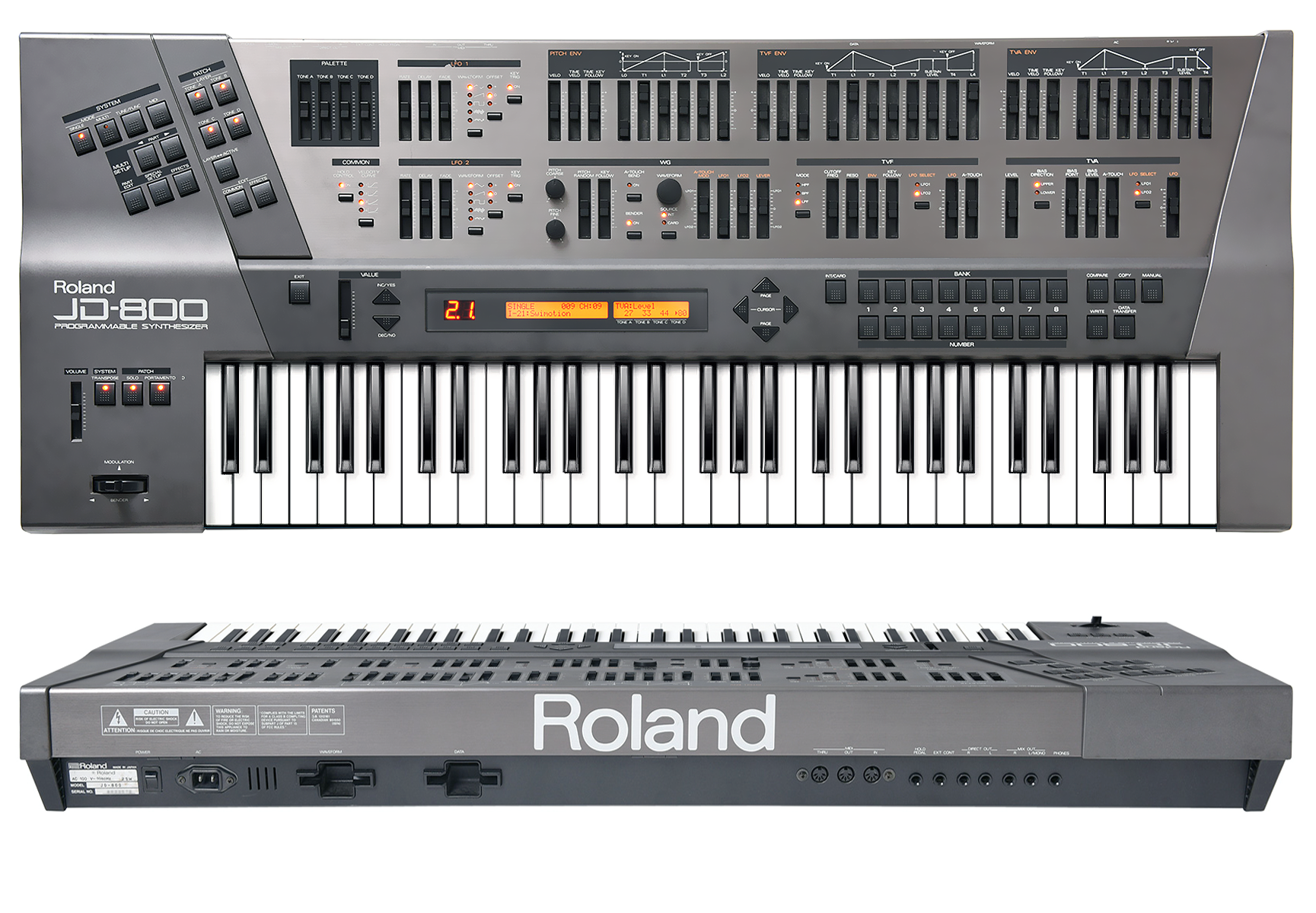
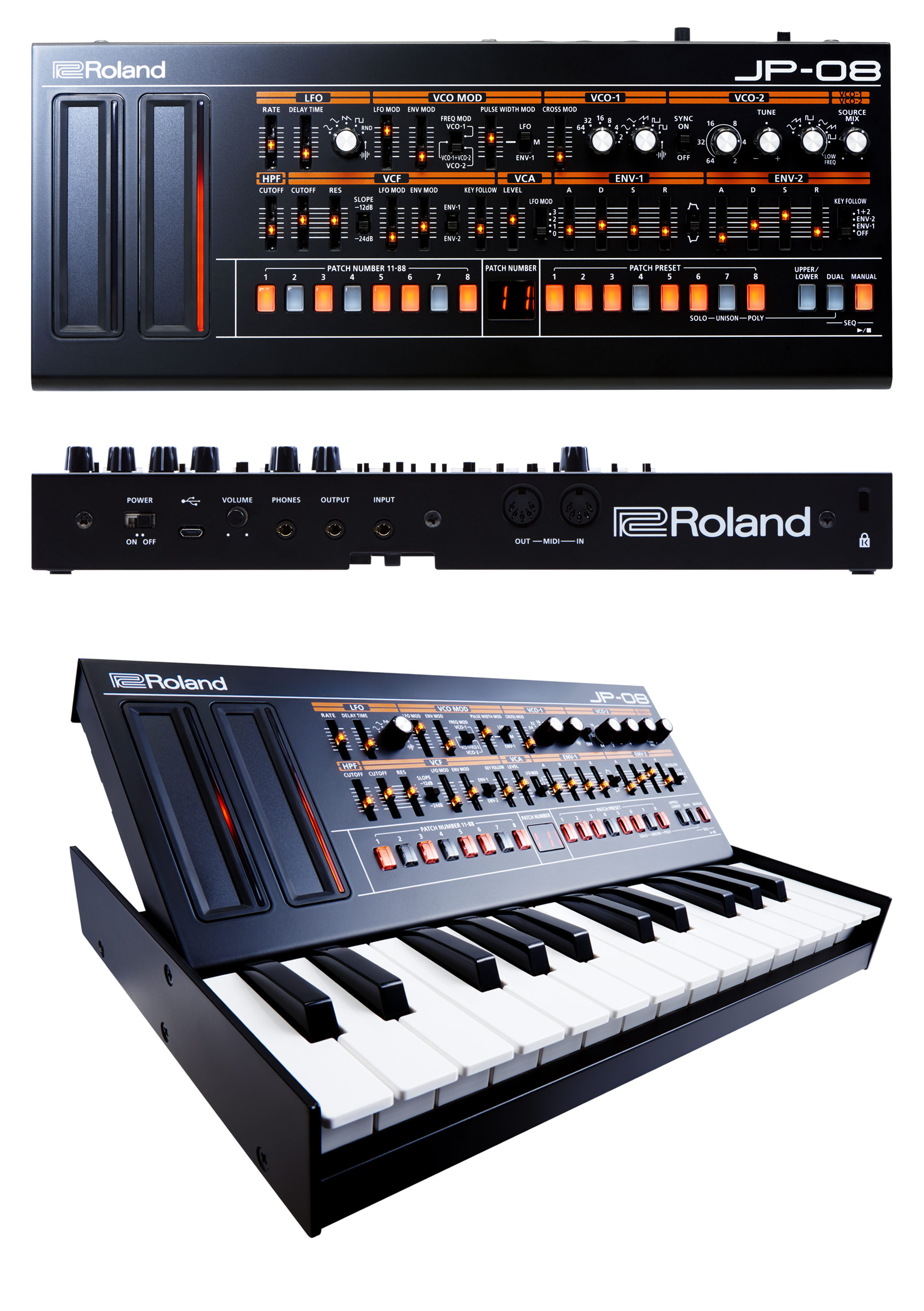
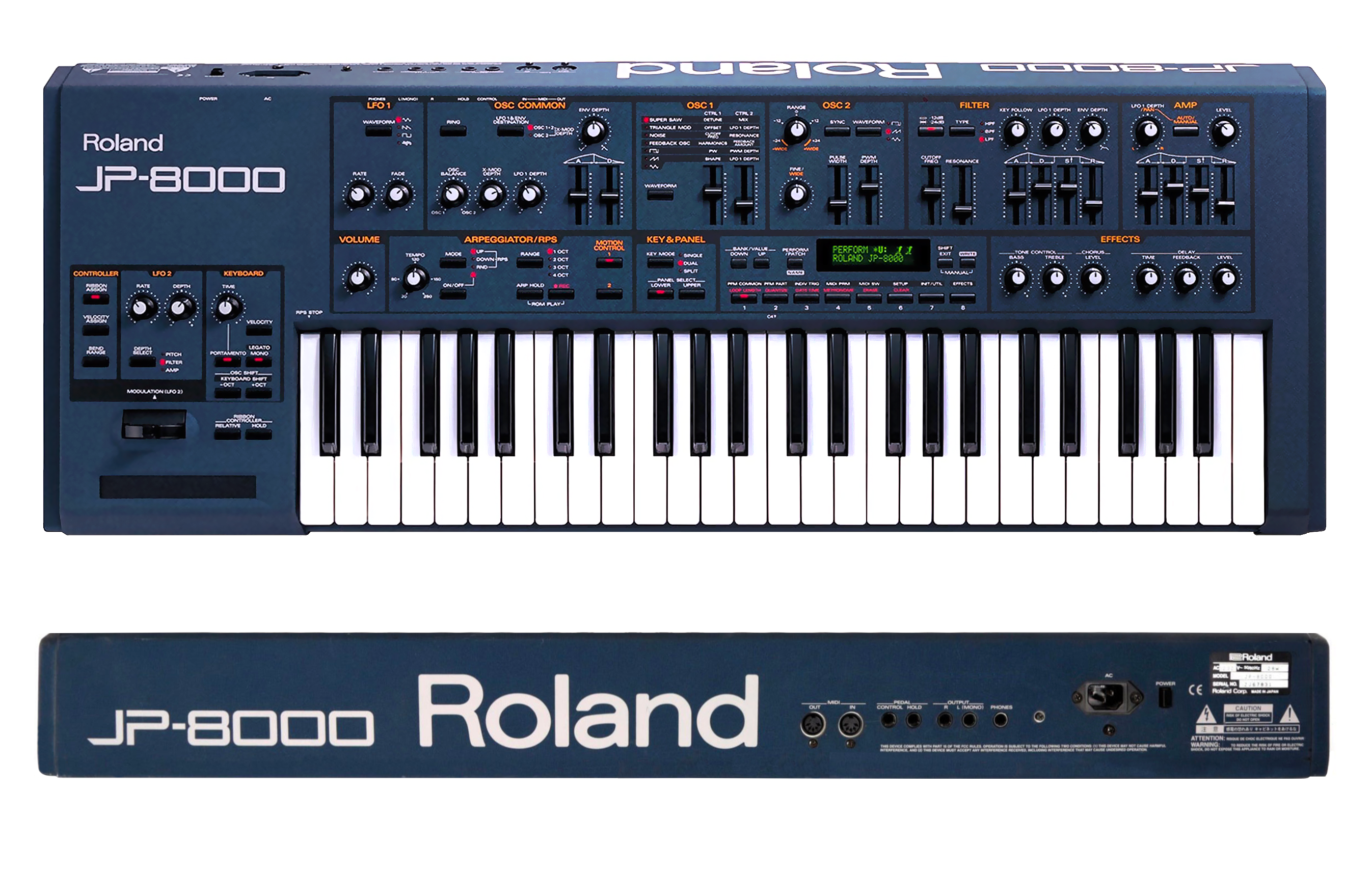
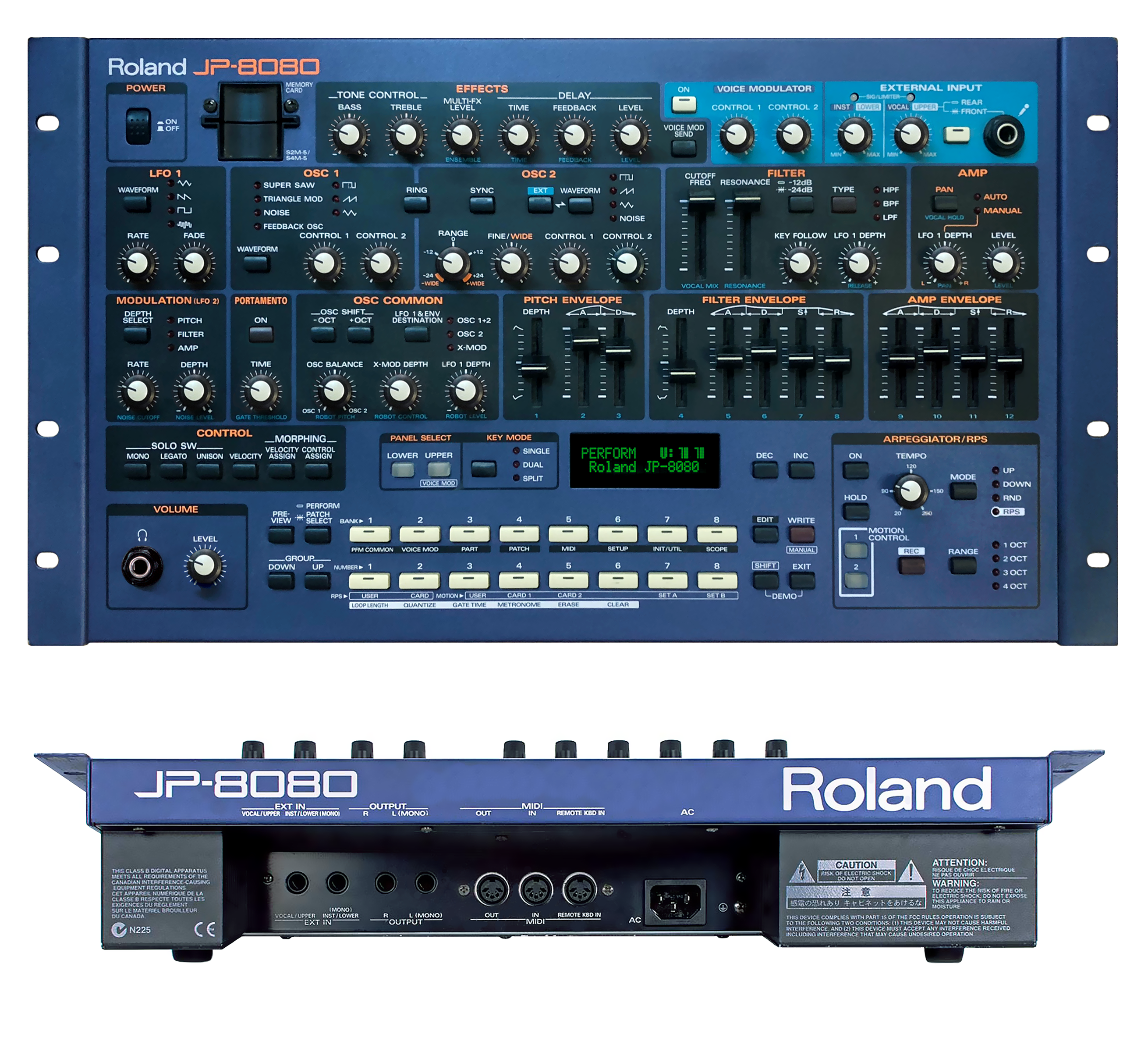
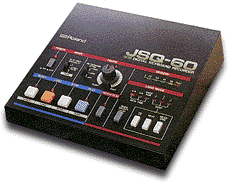
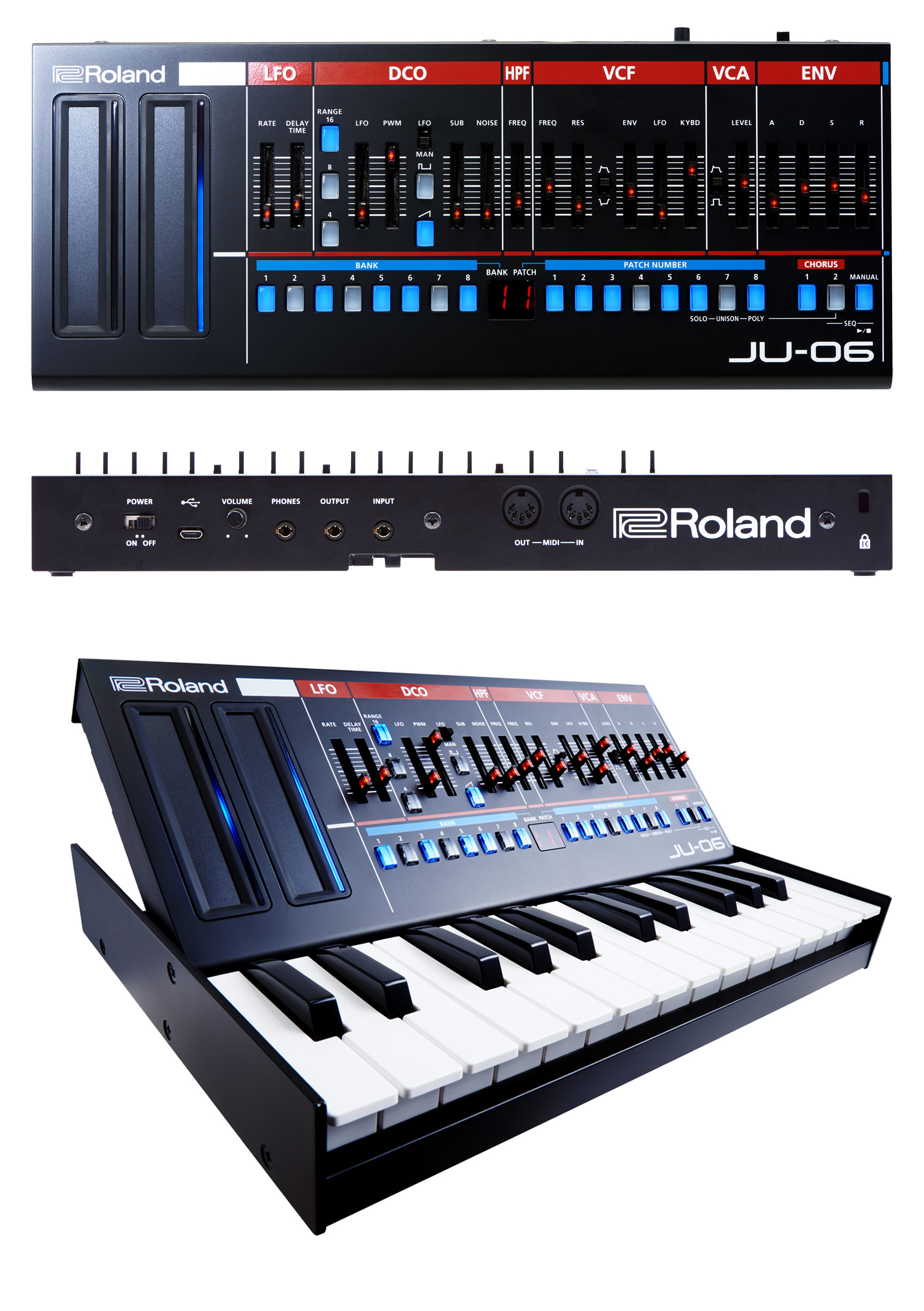
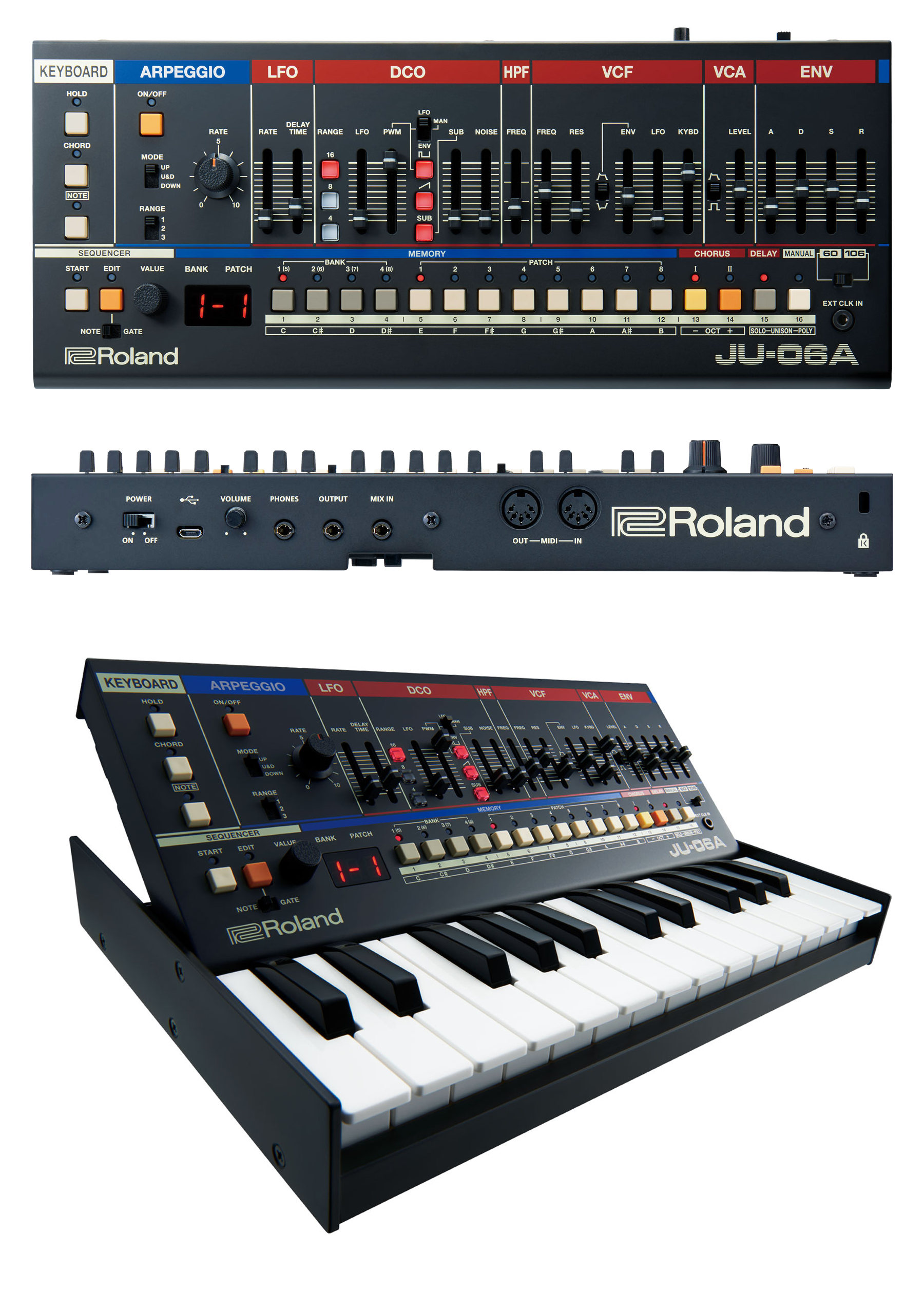
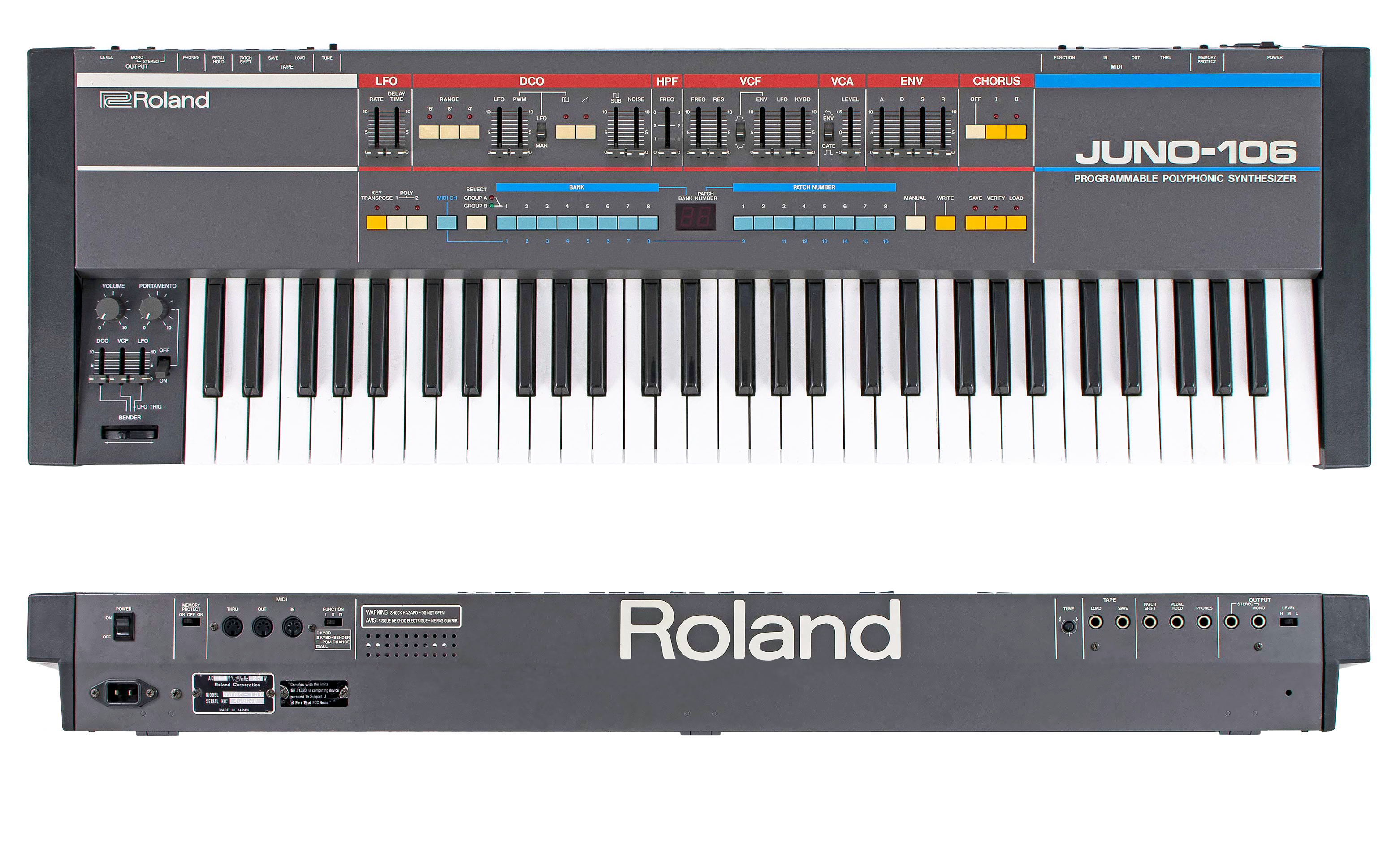
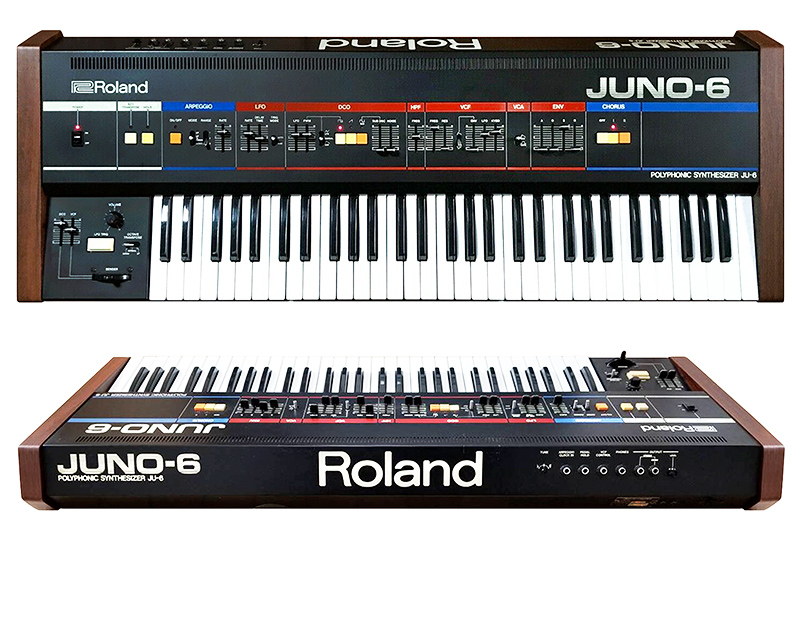
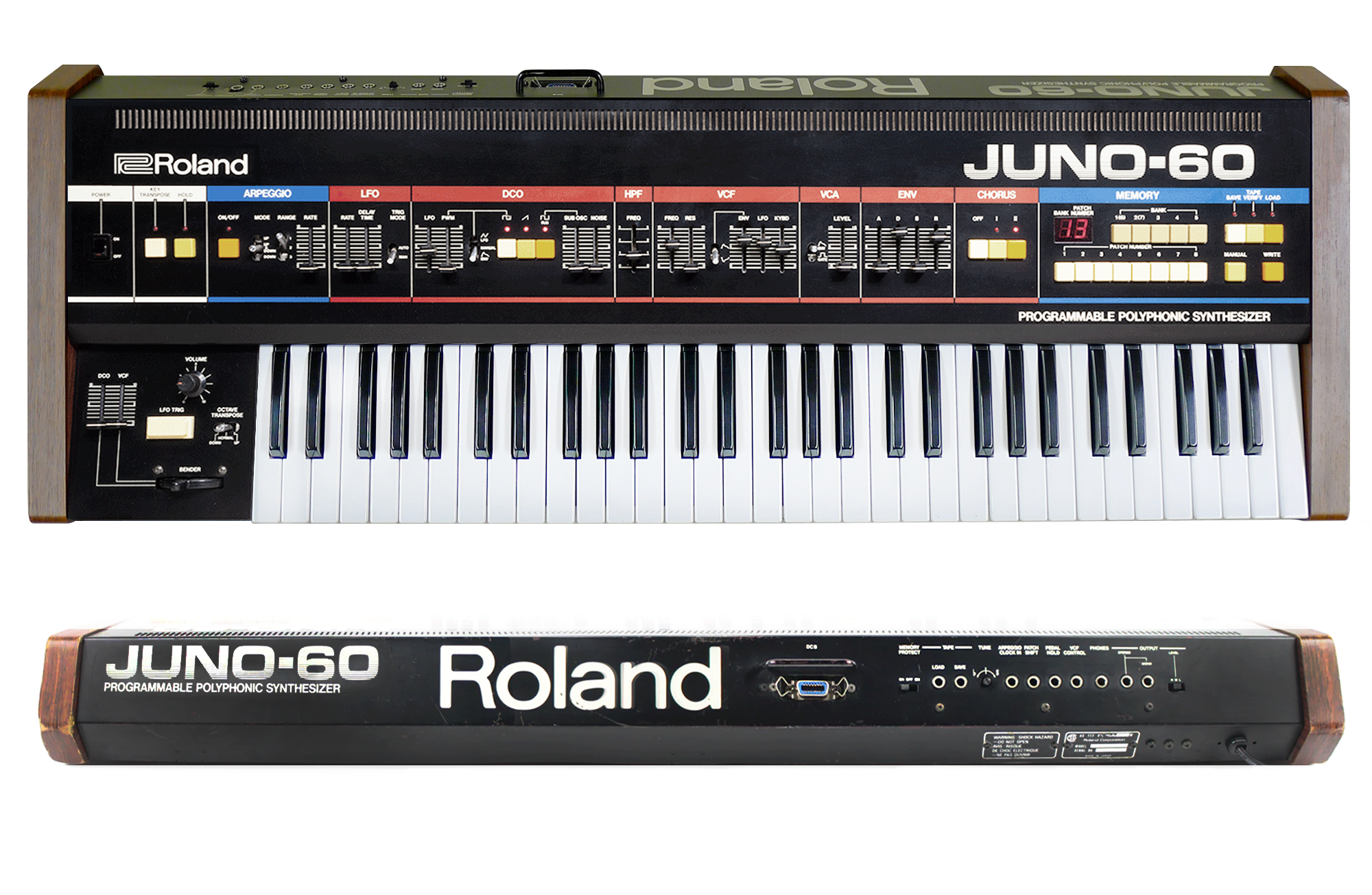


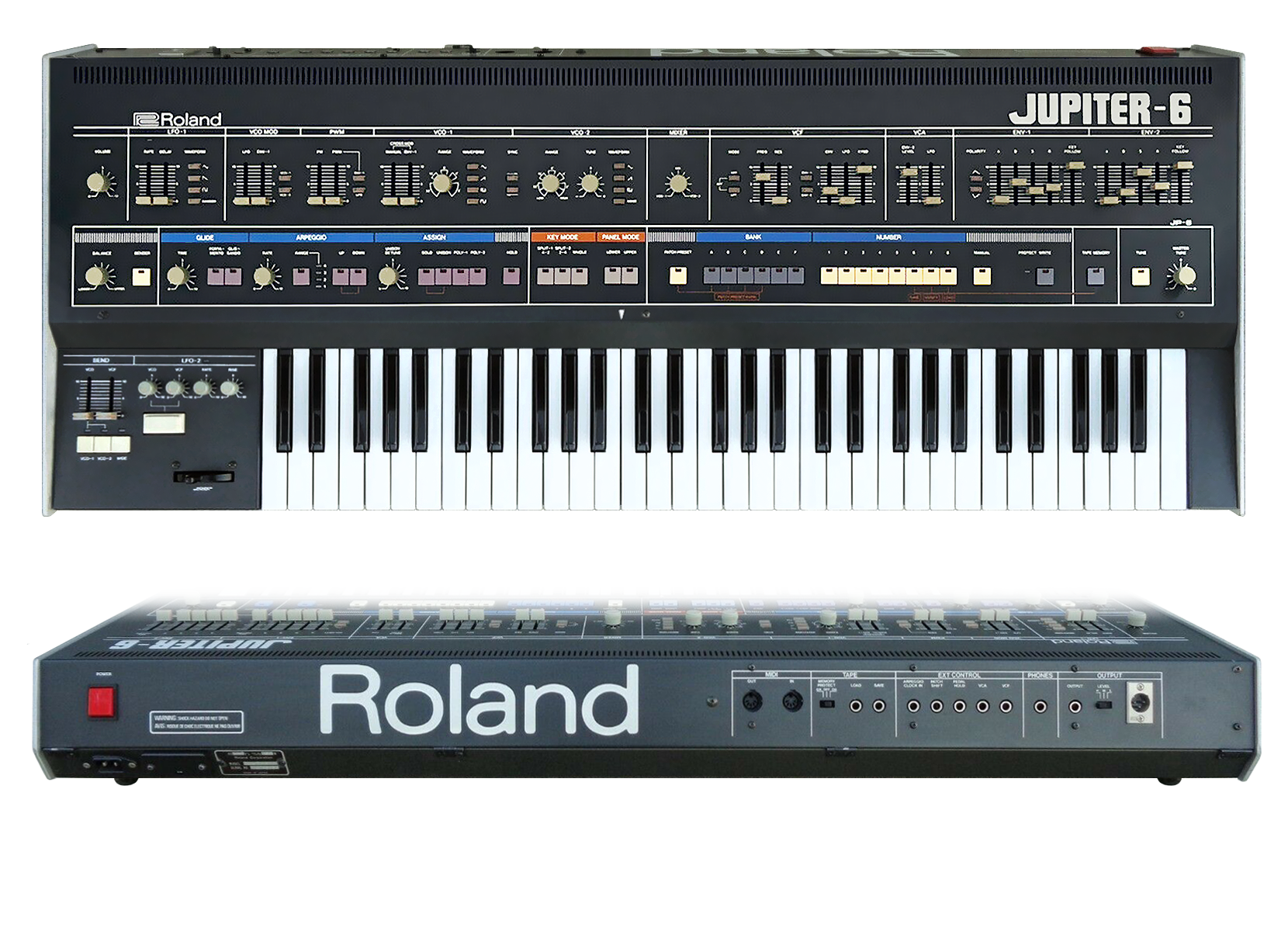
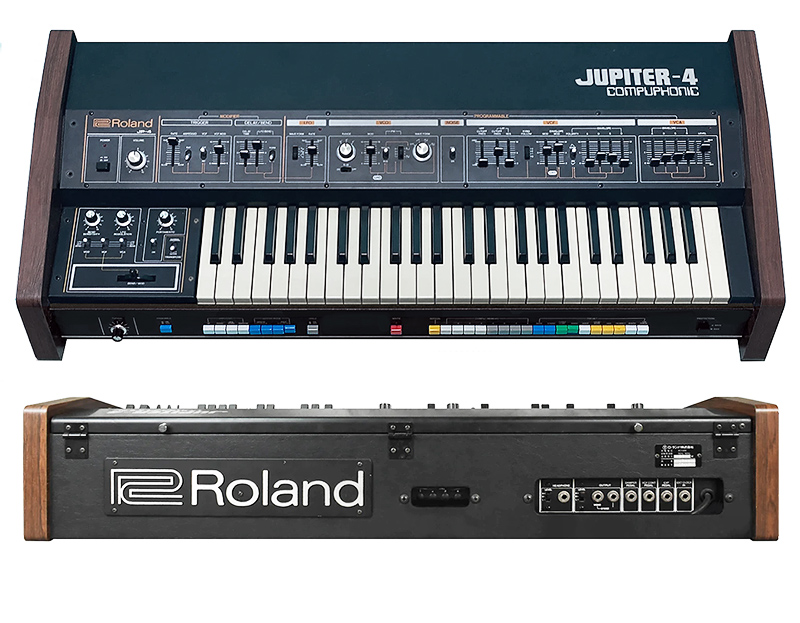
_BIG.jpg)

